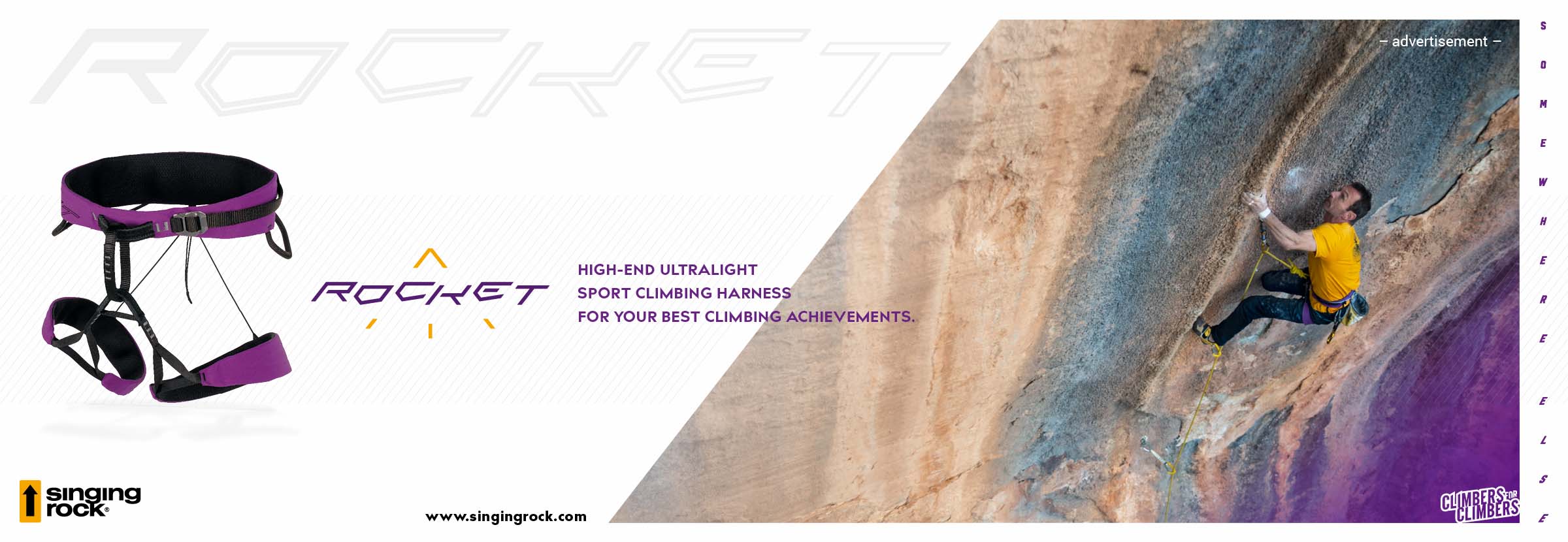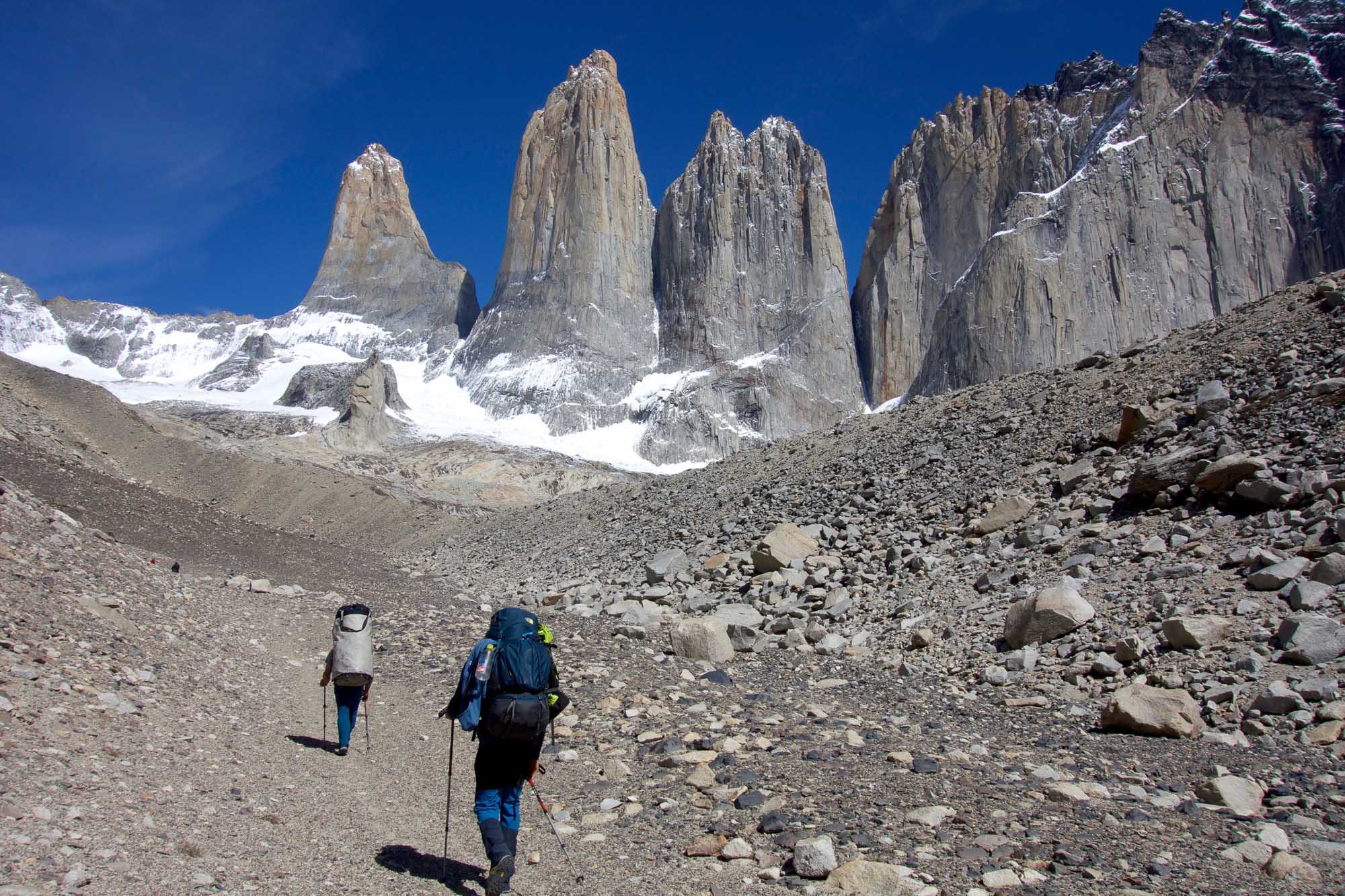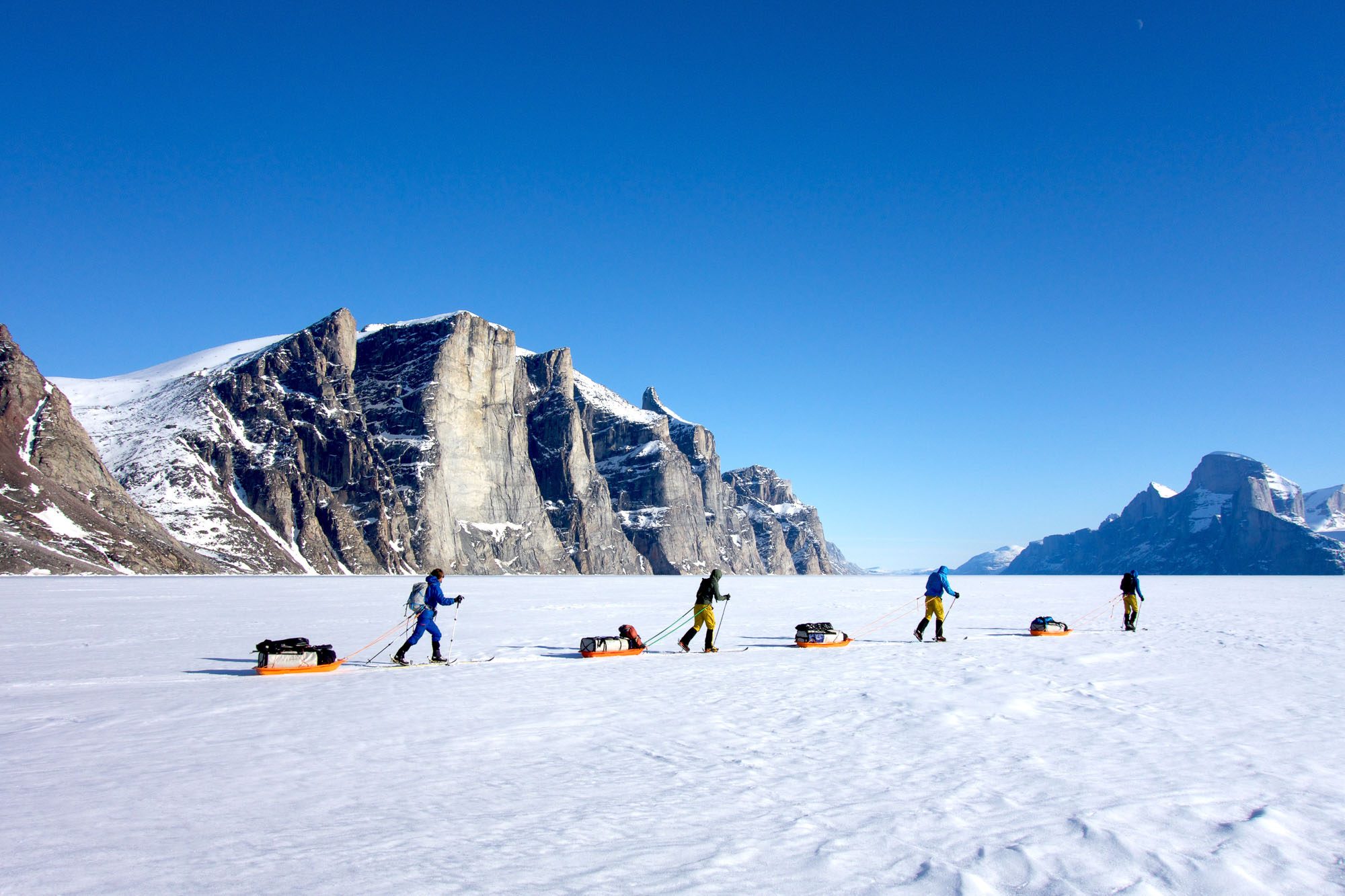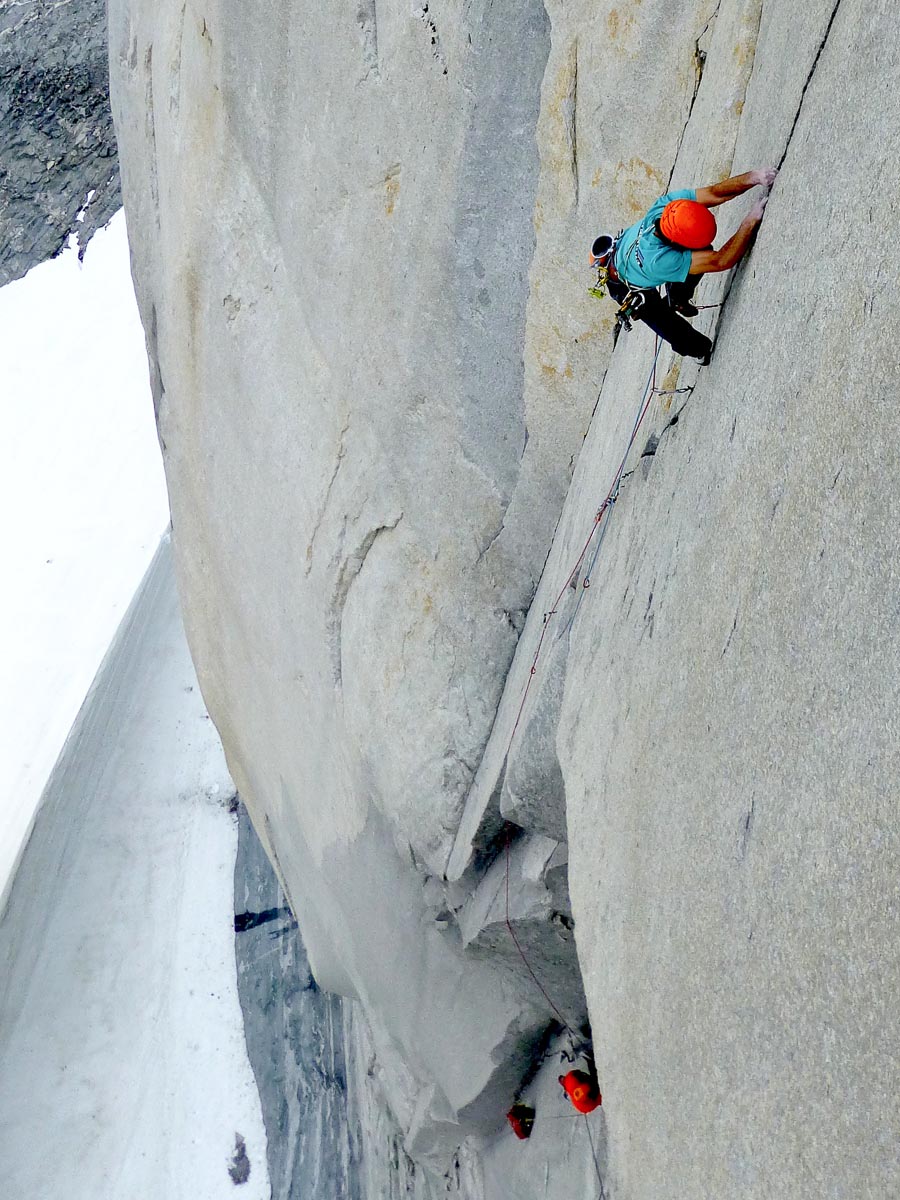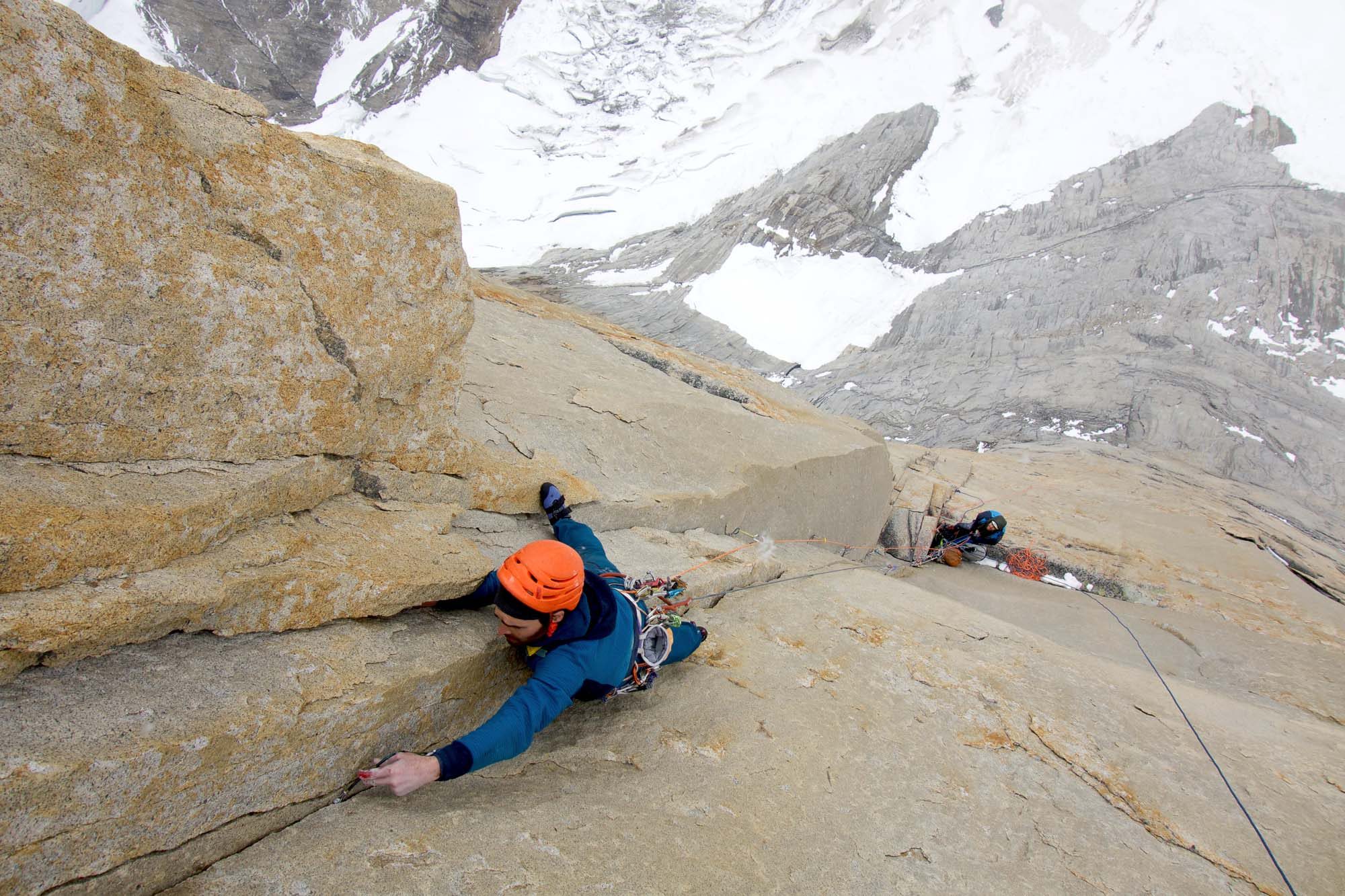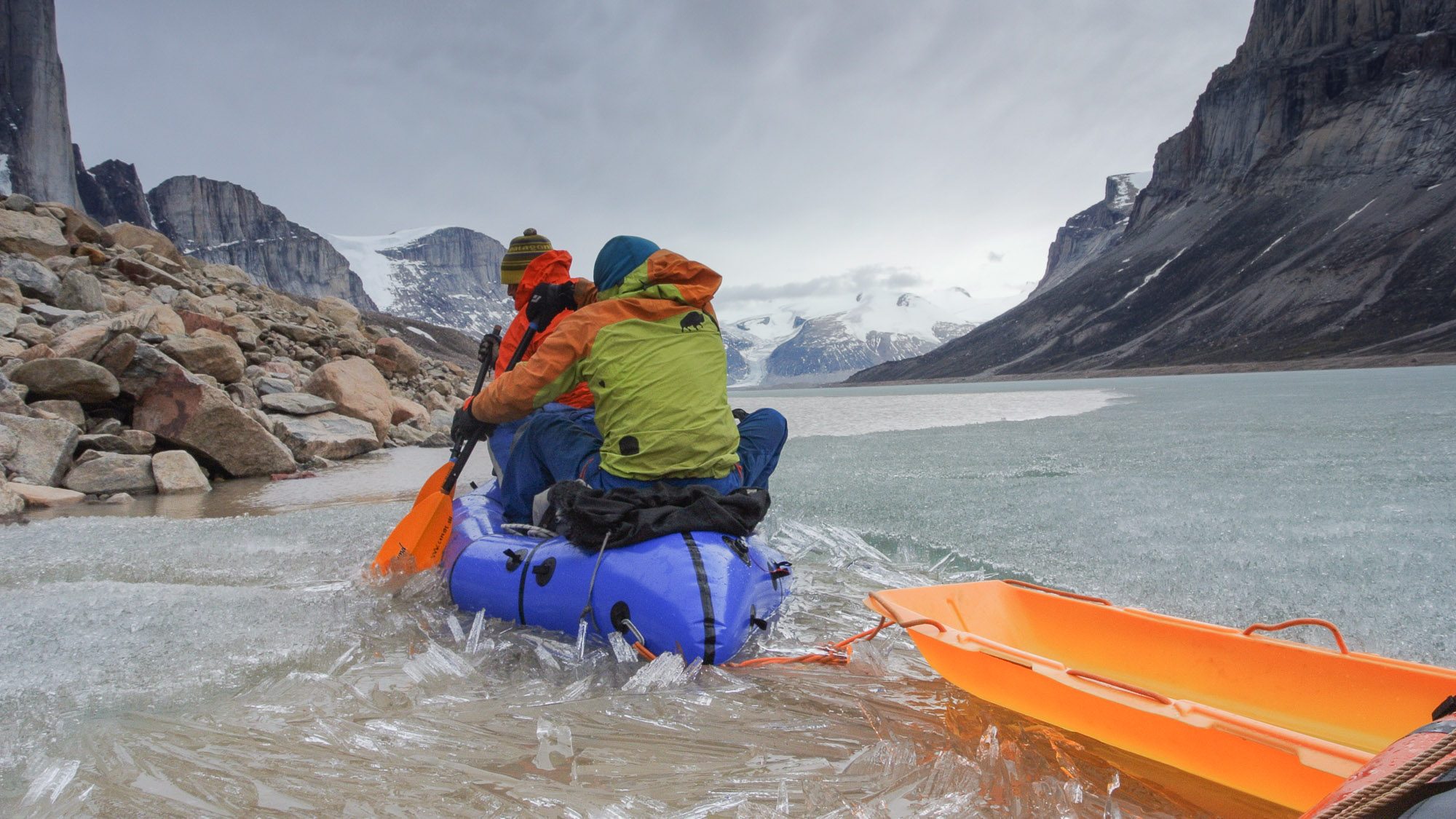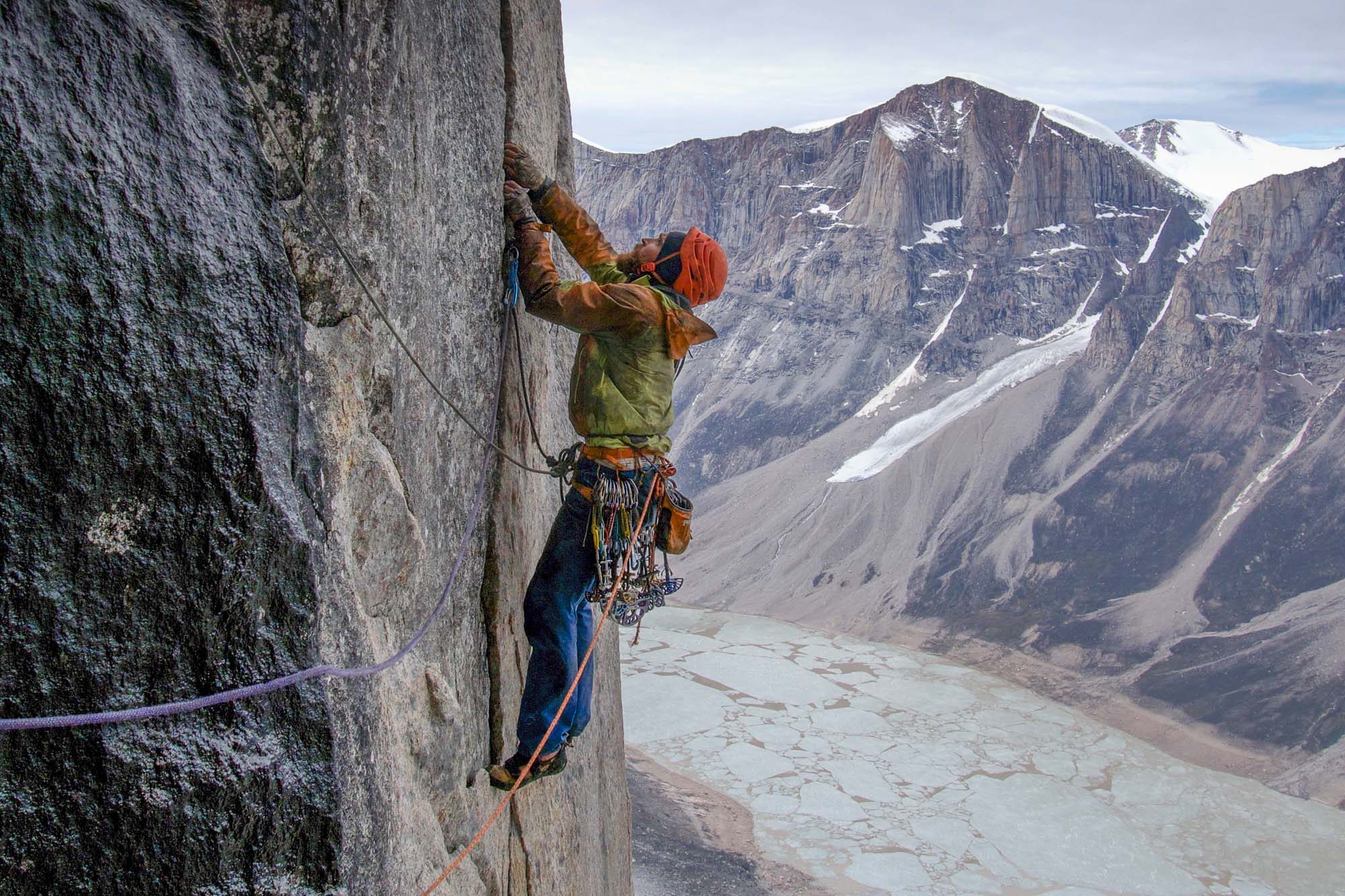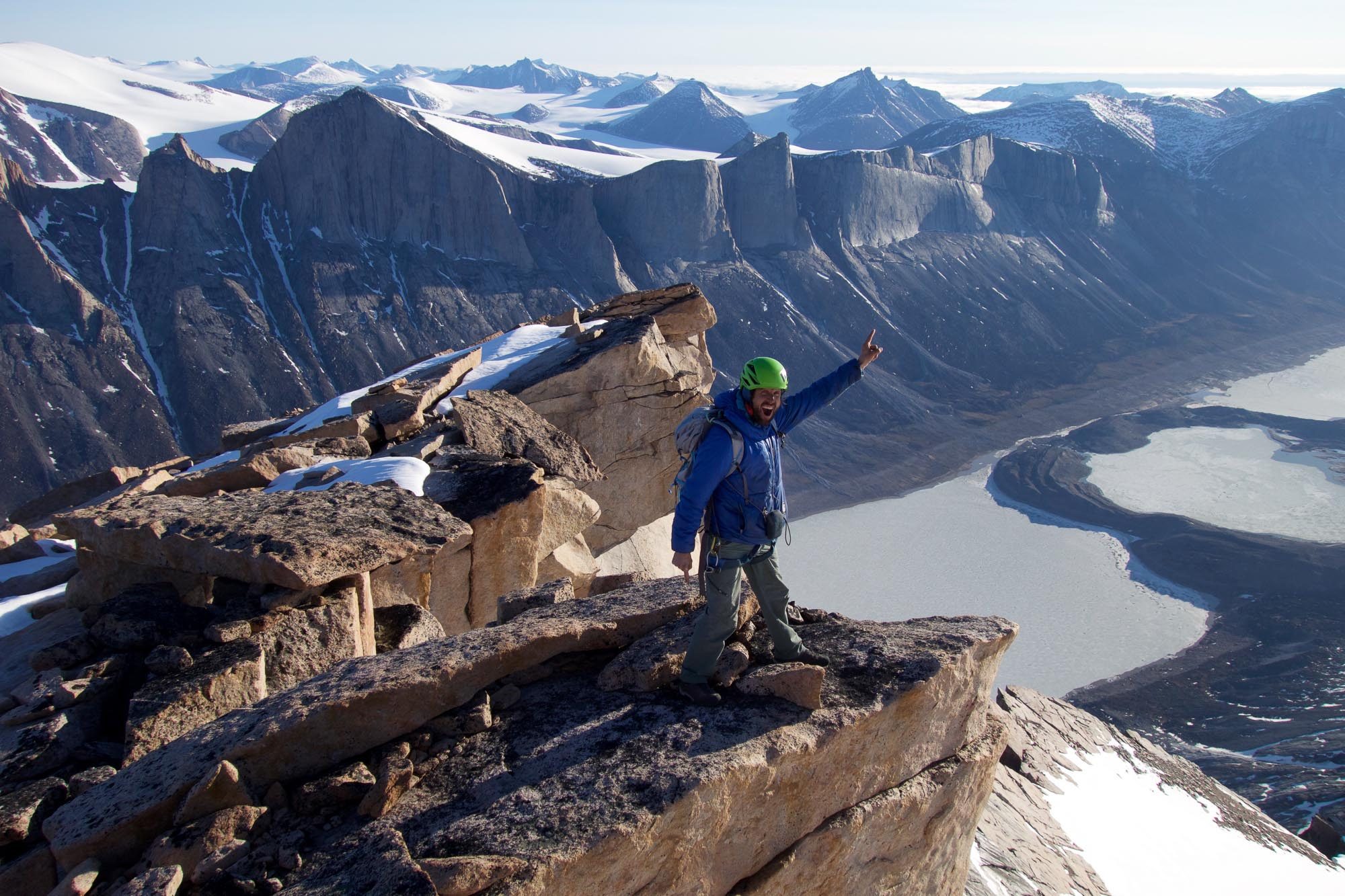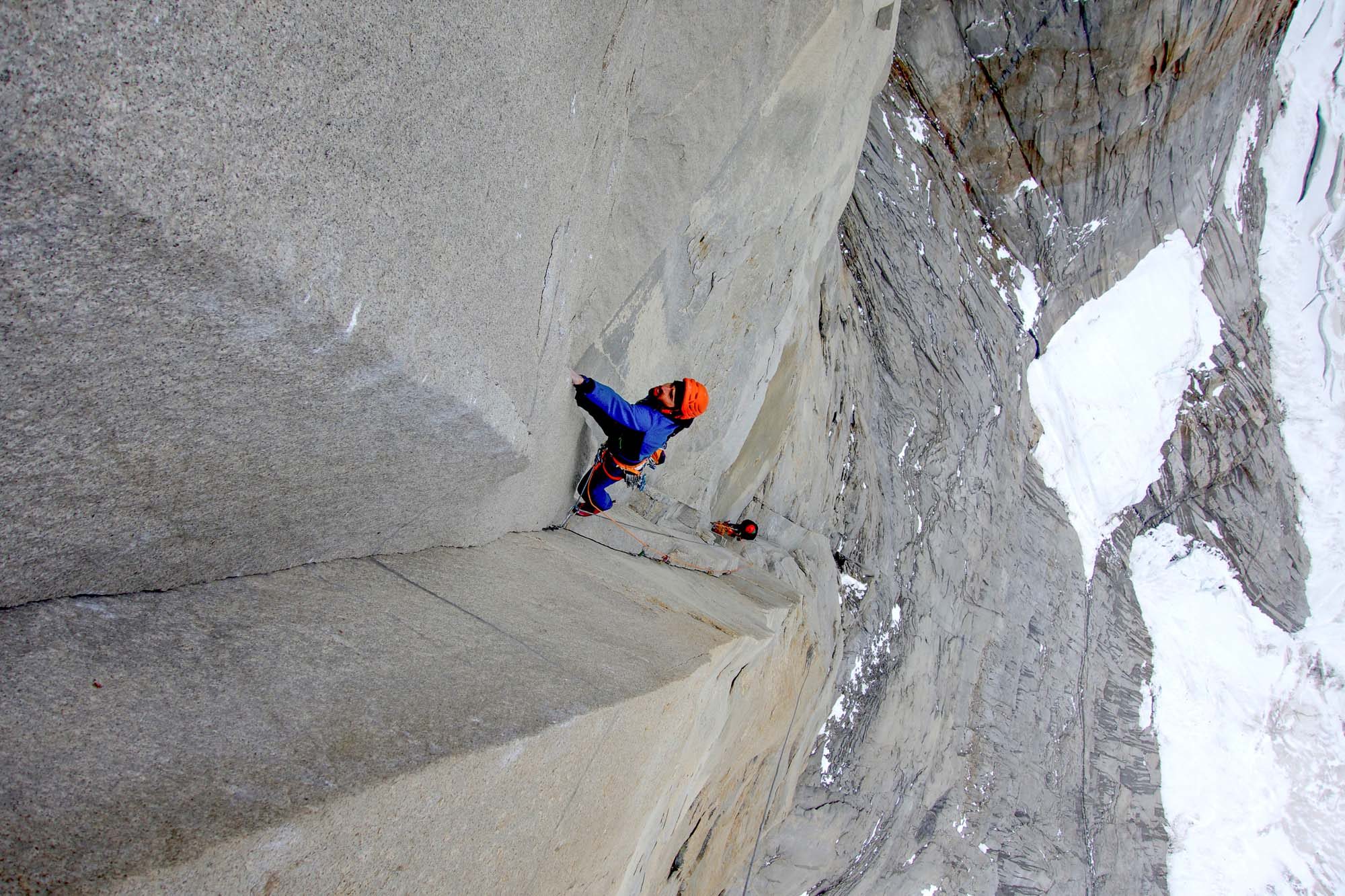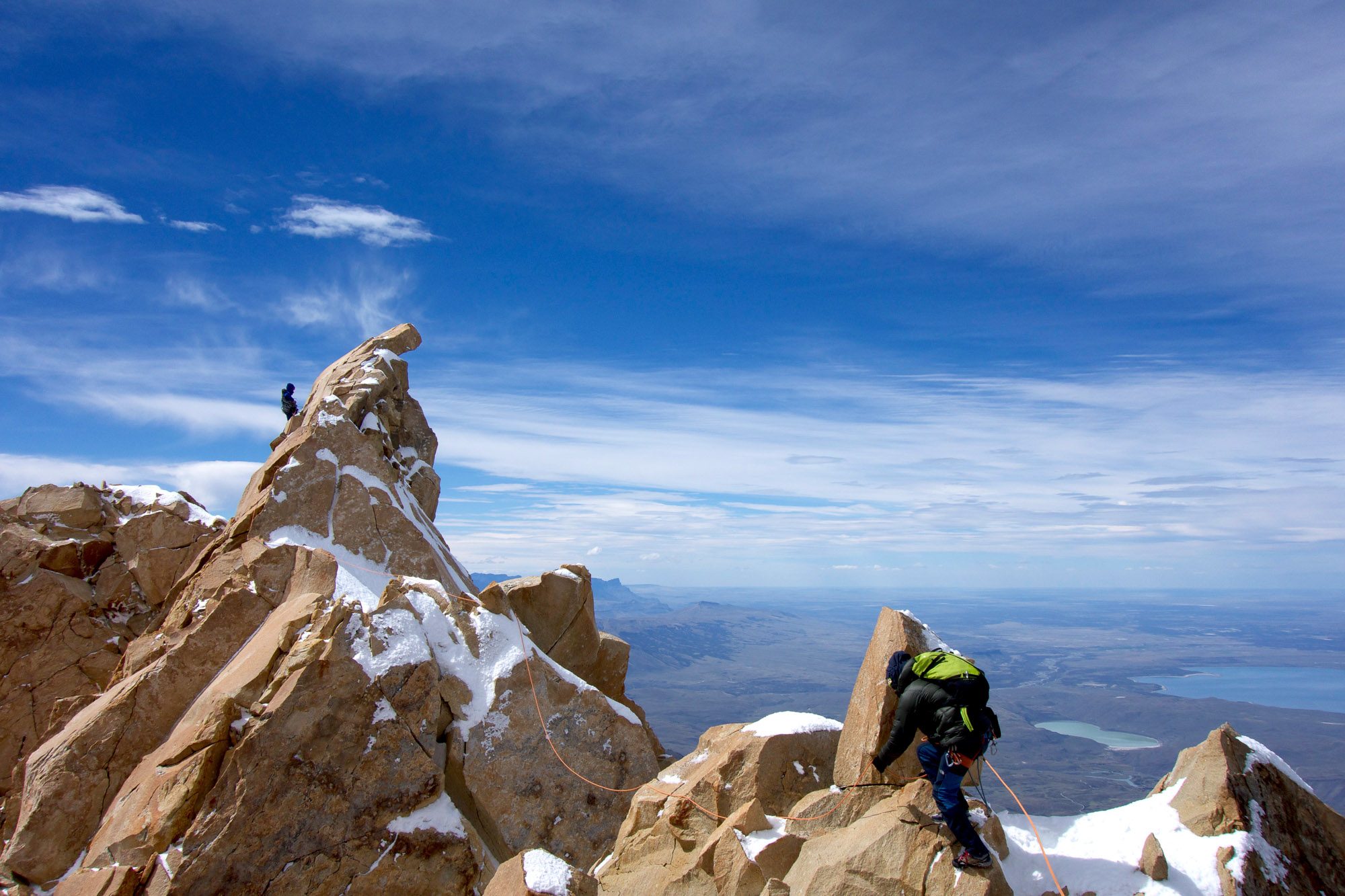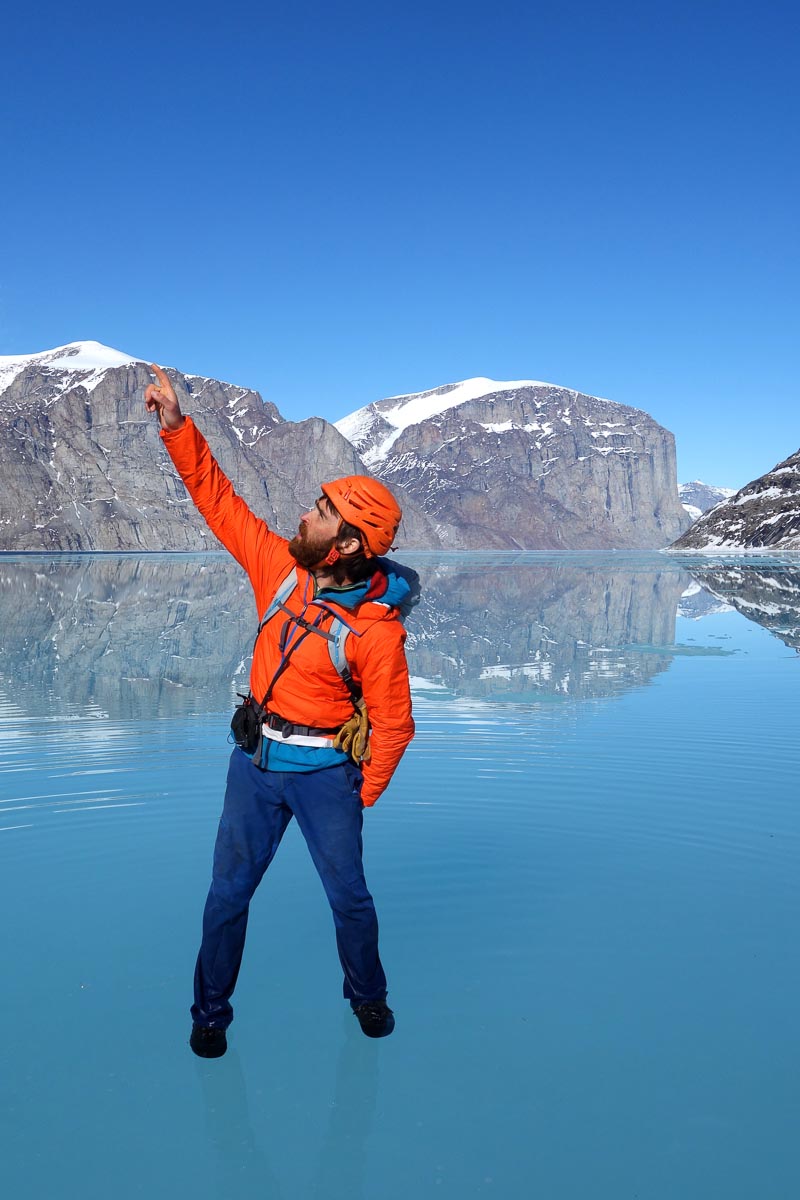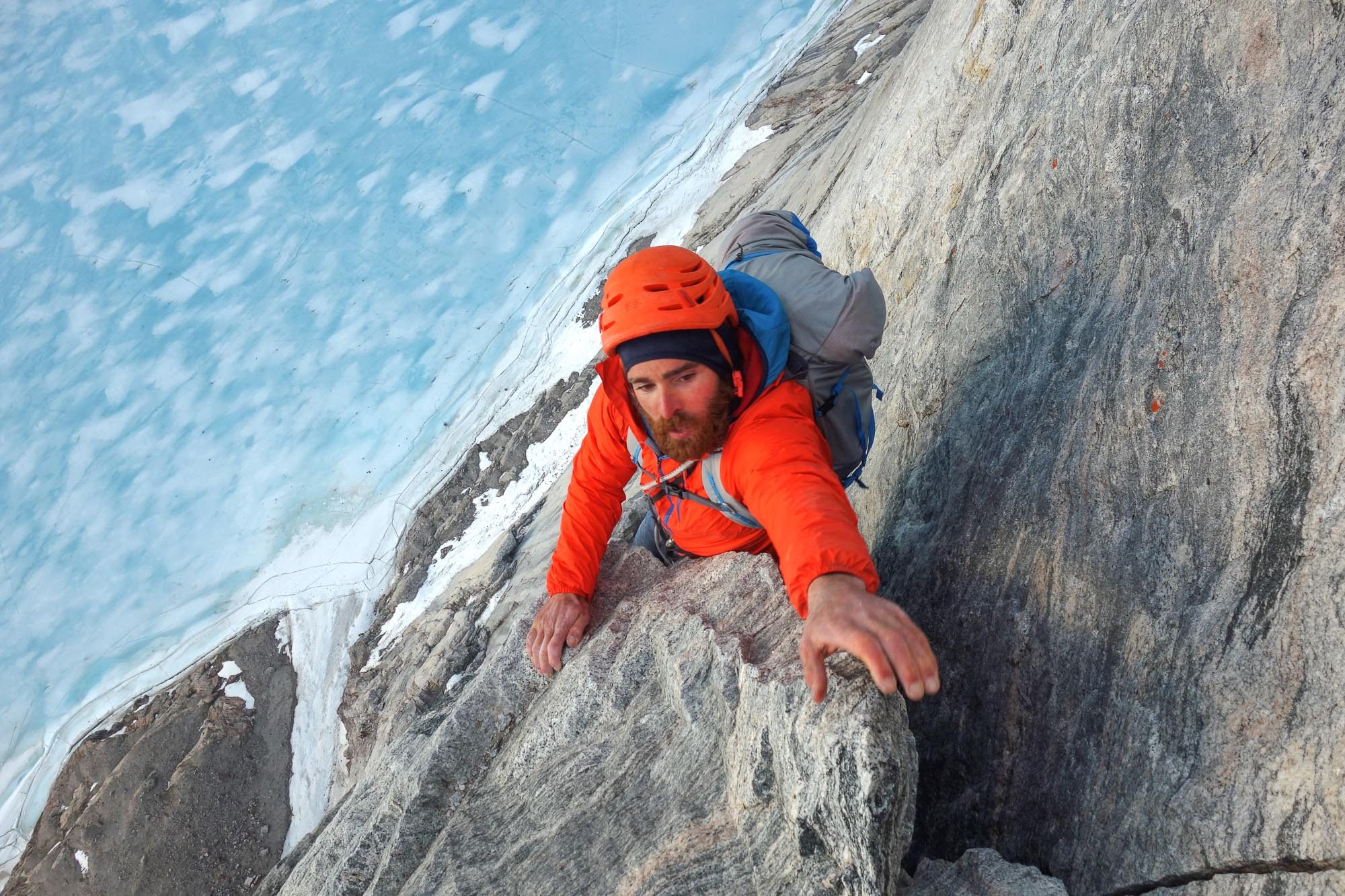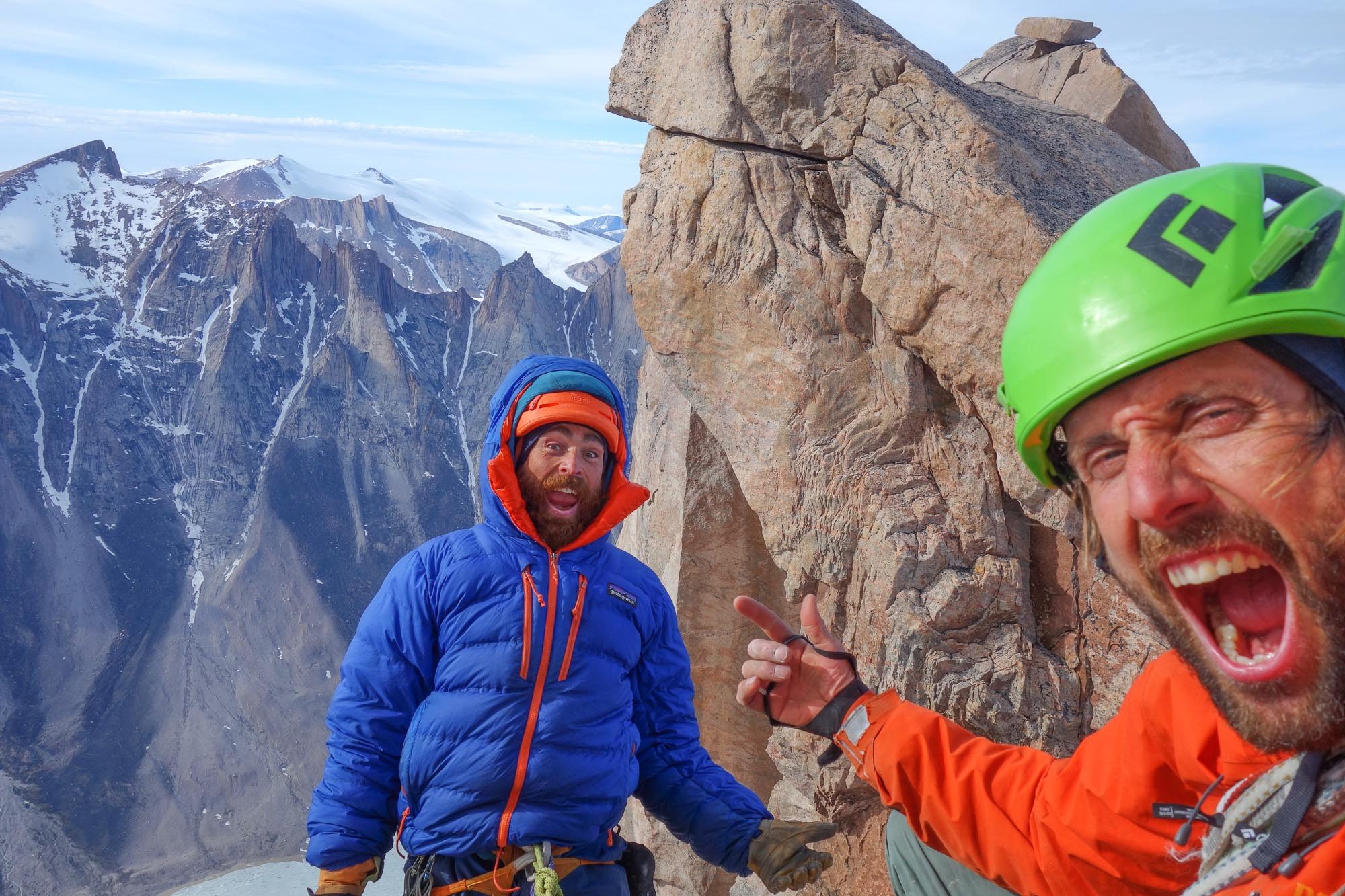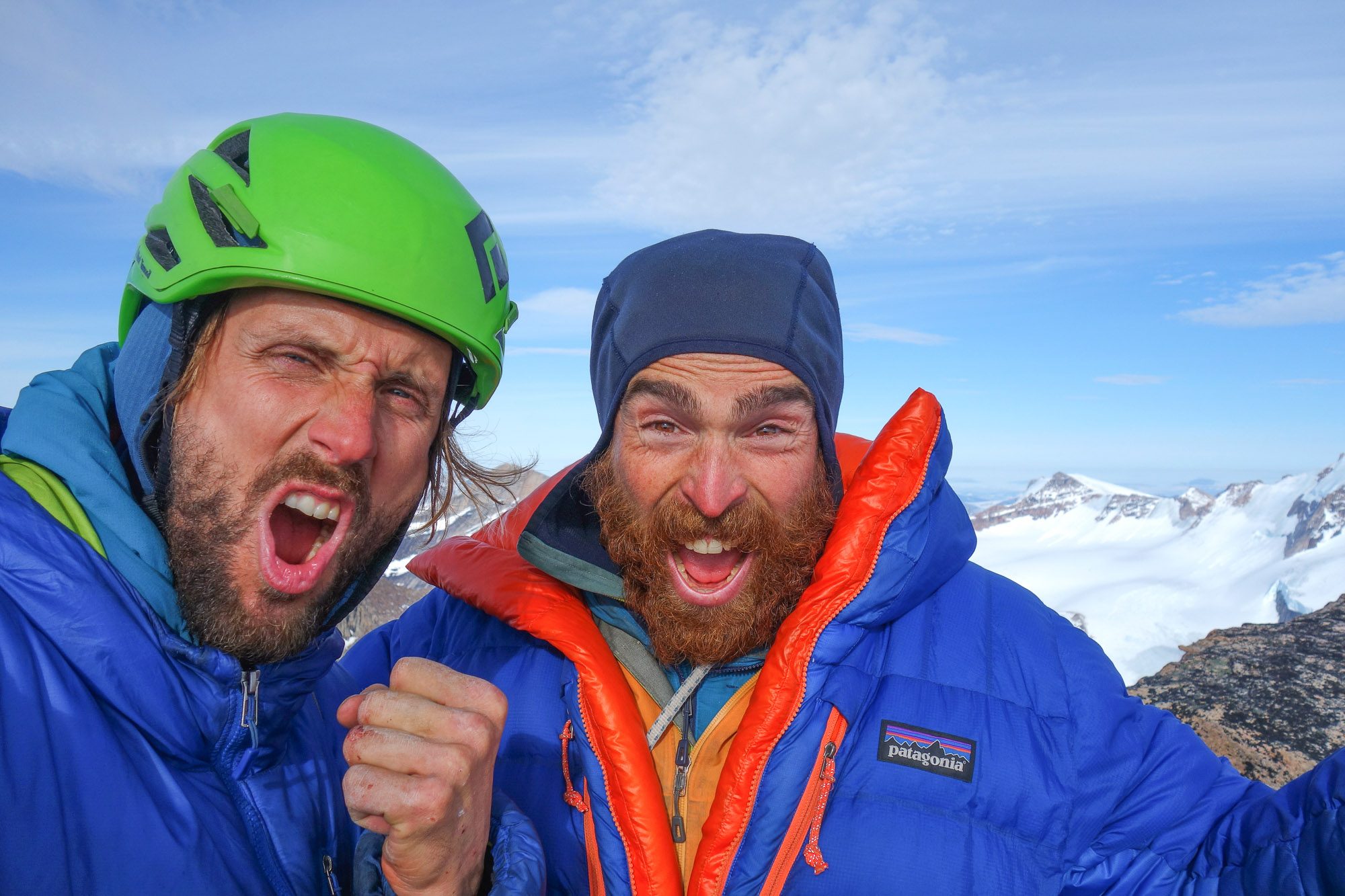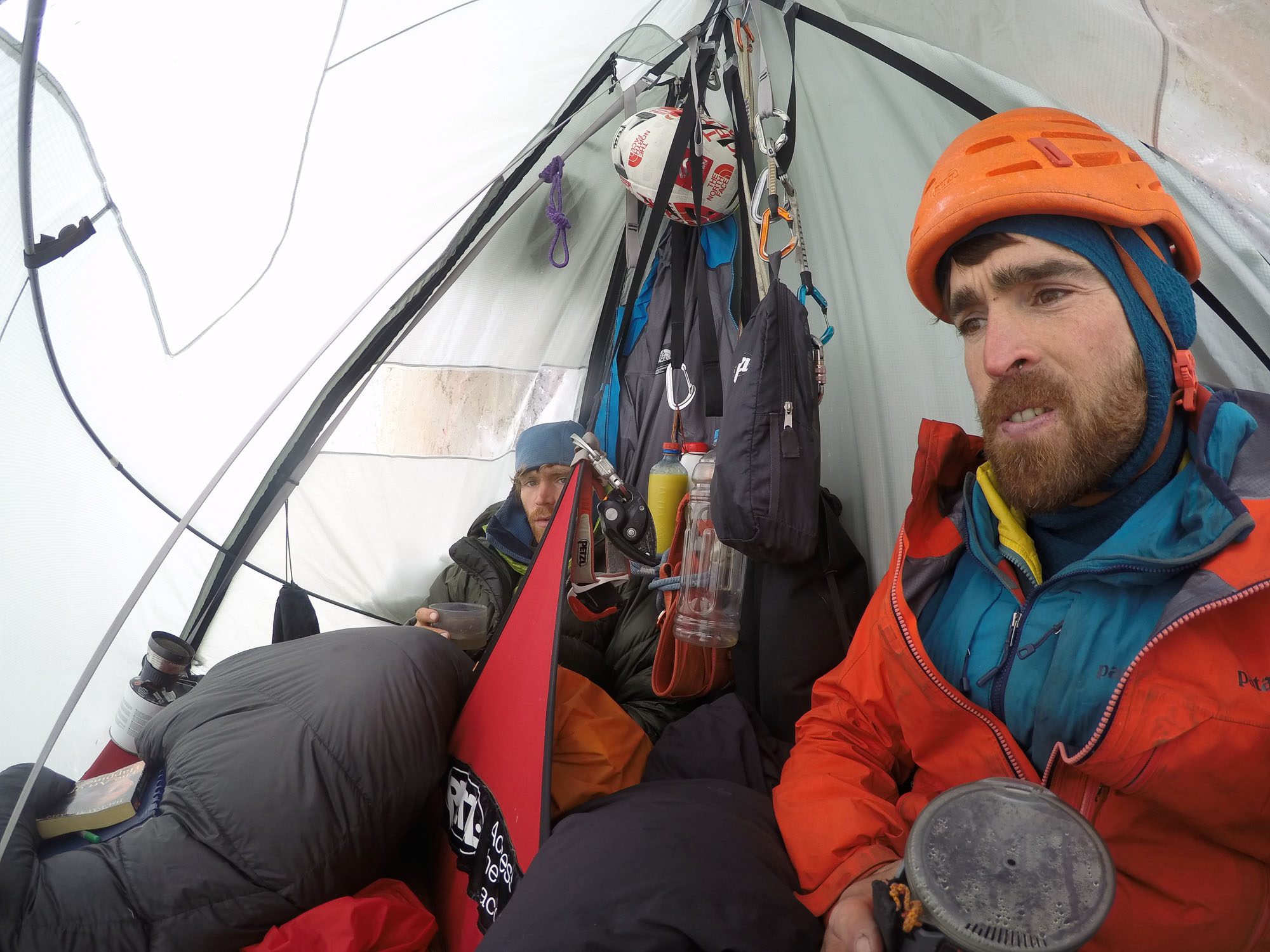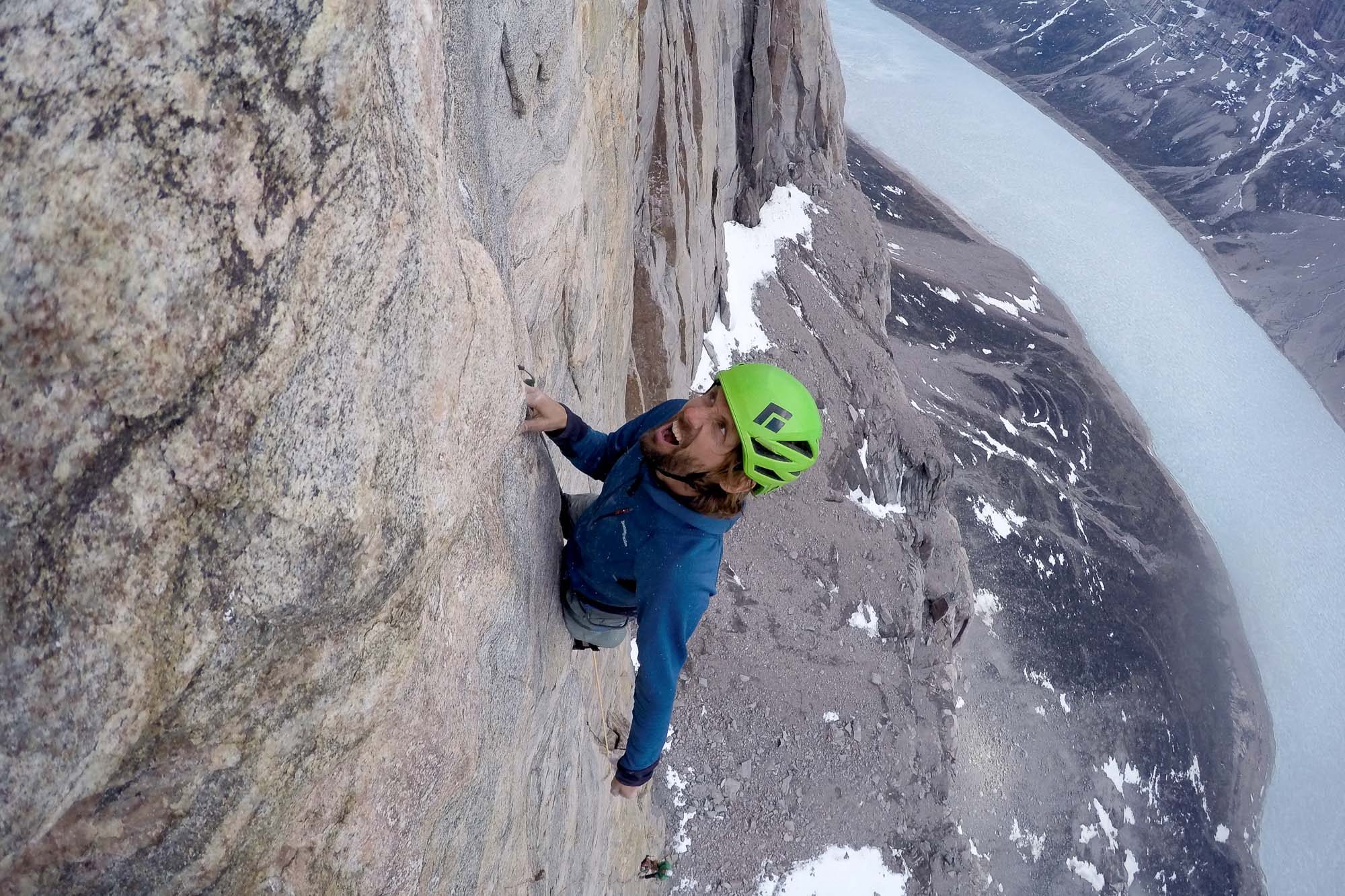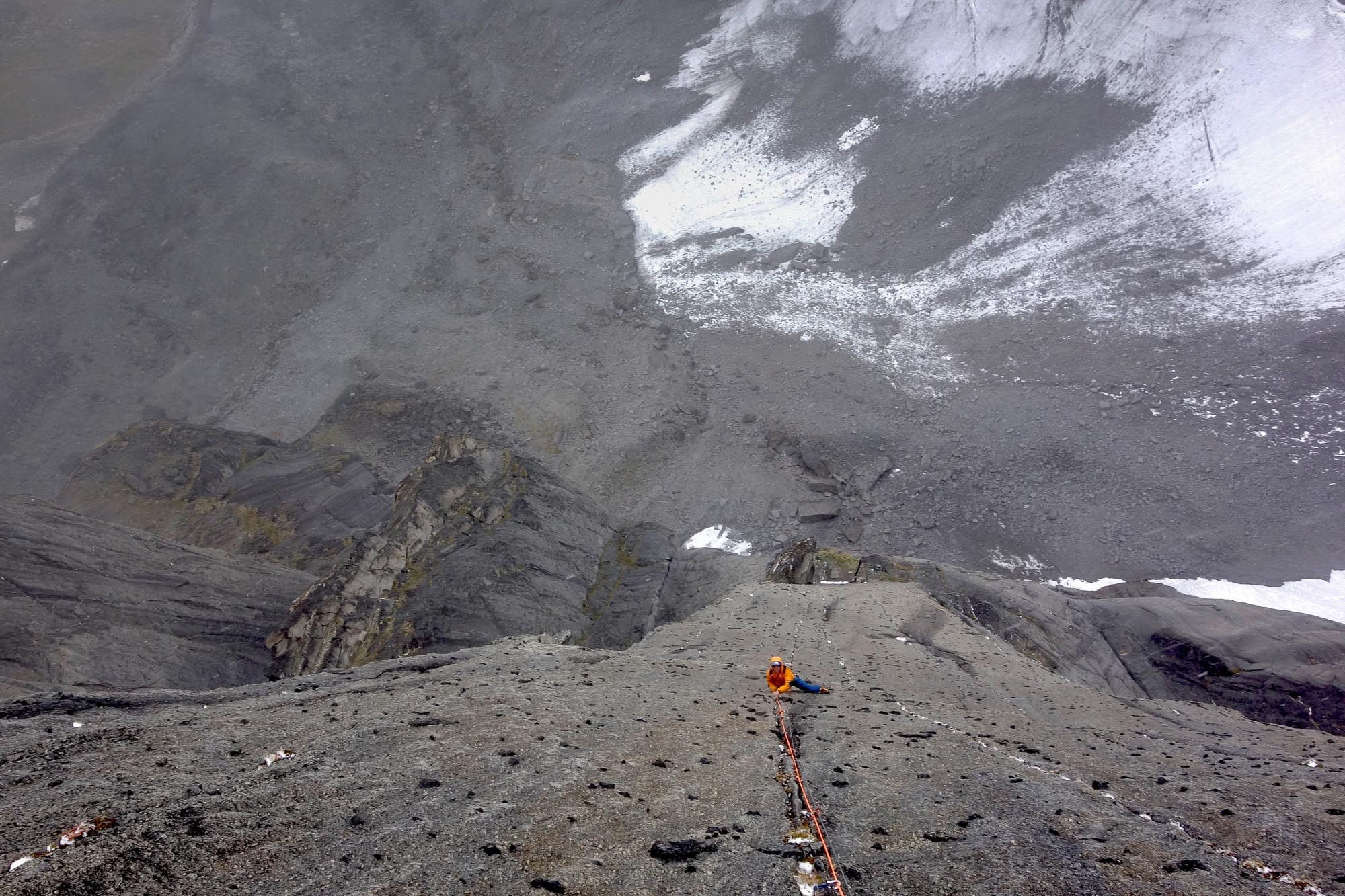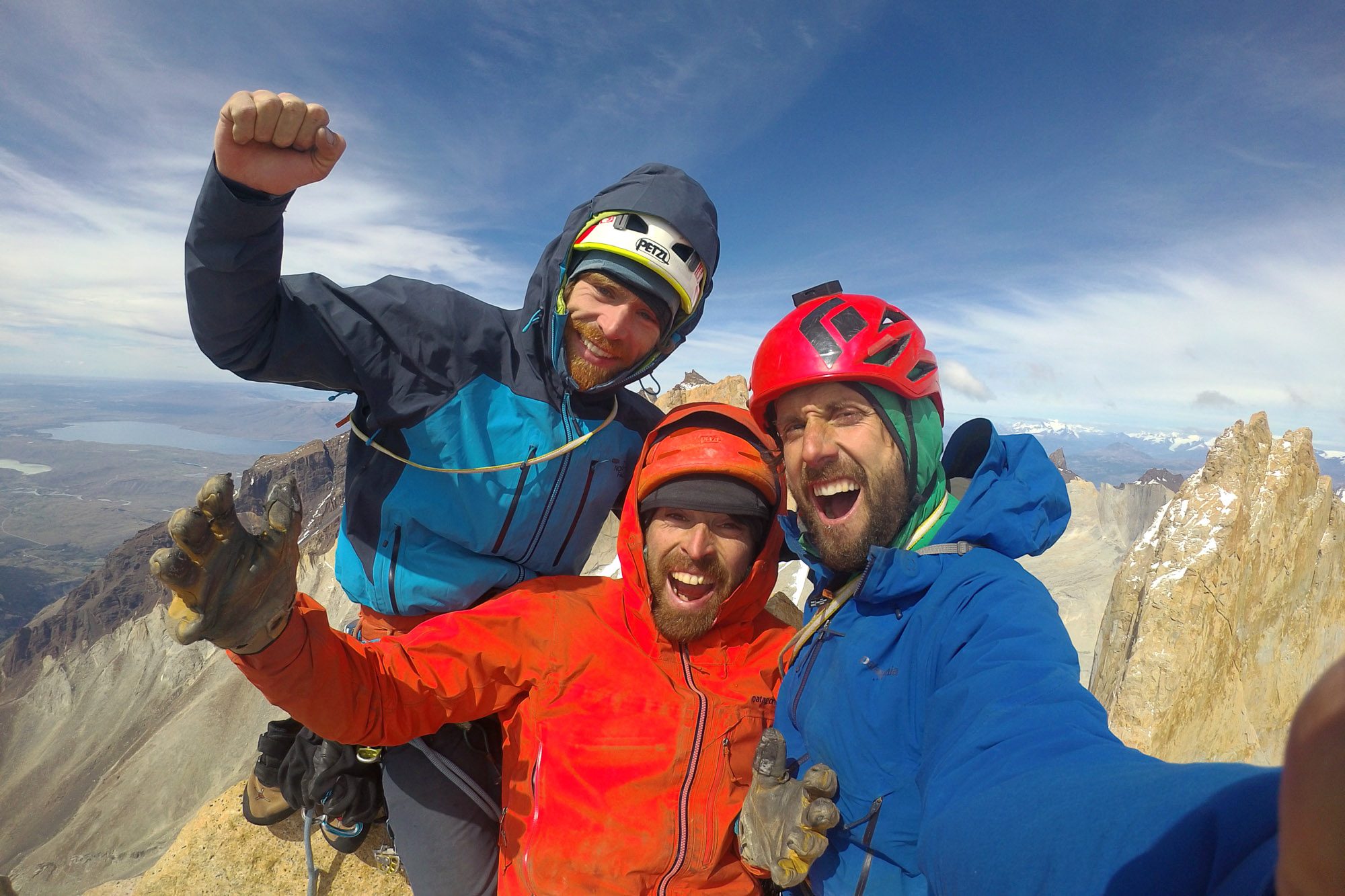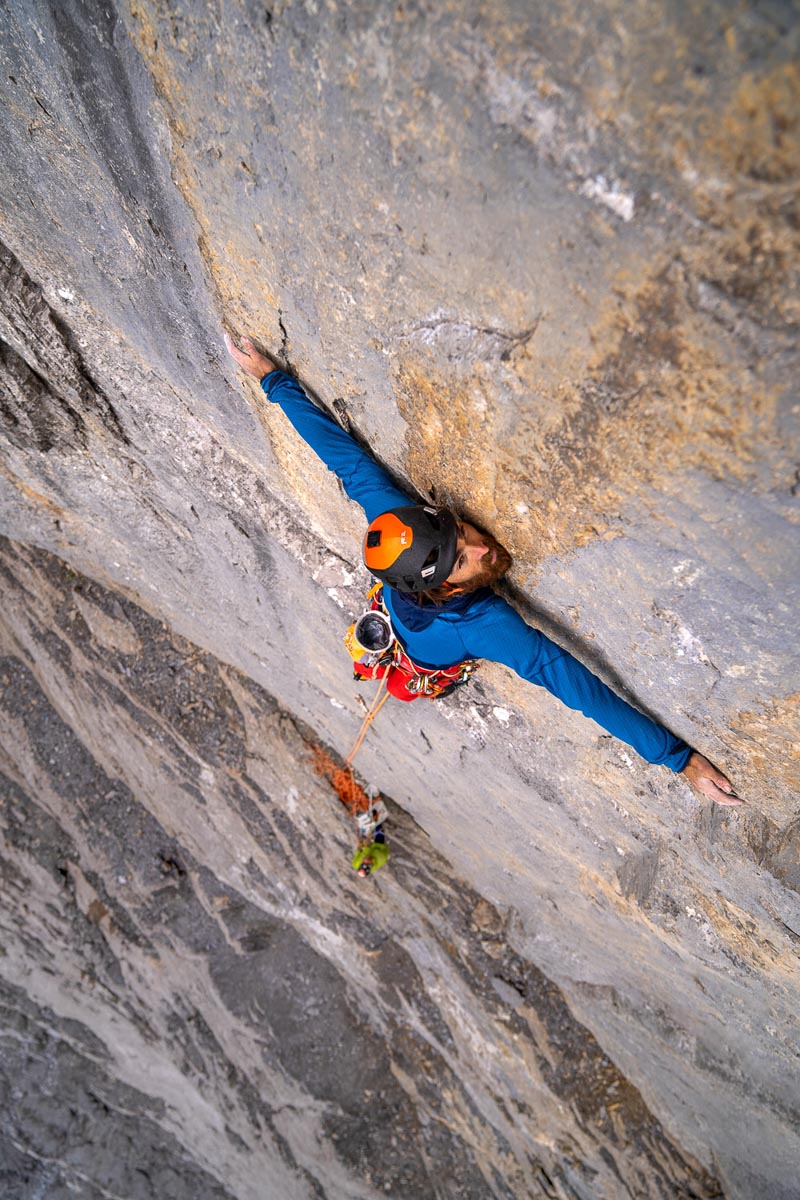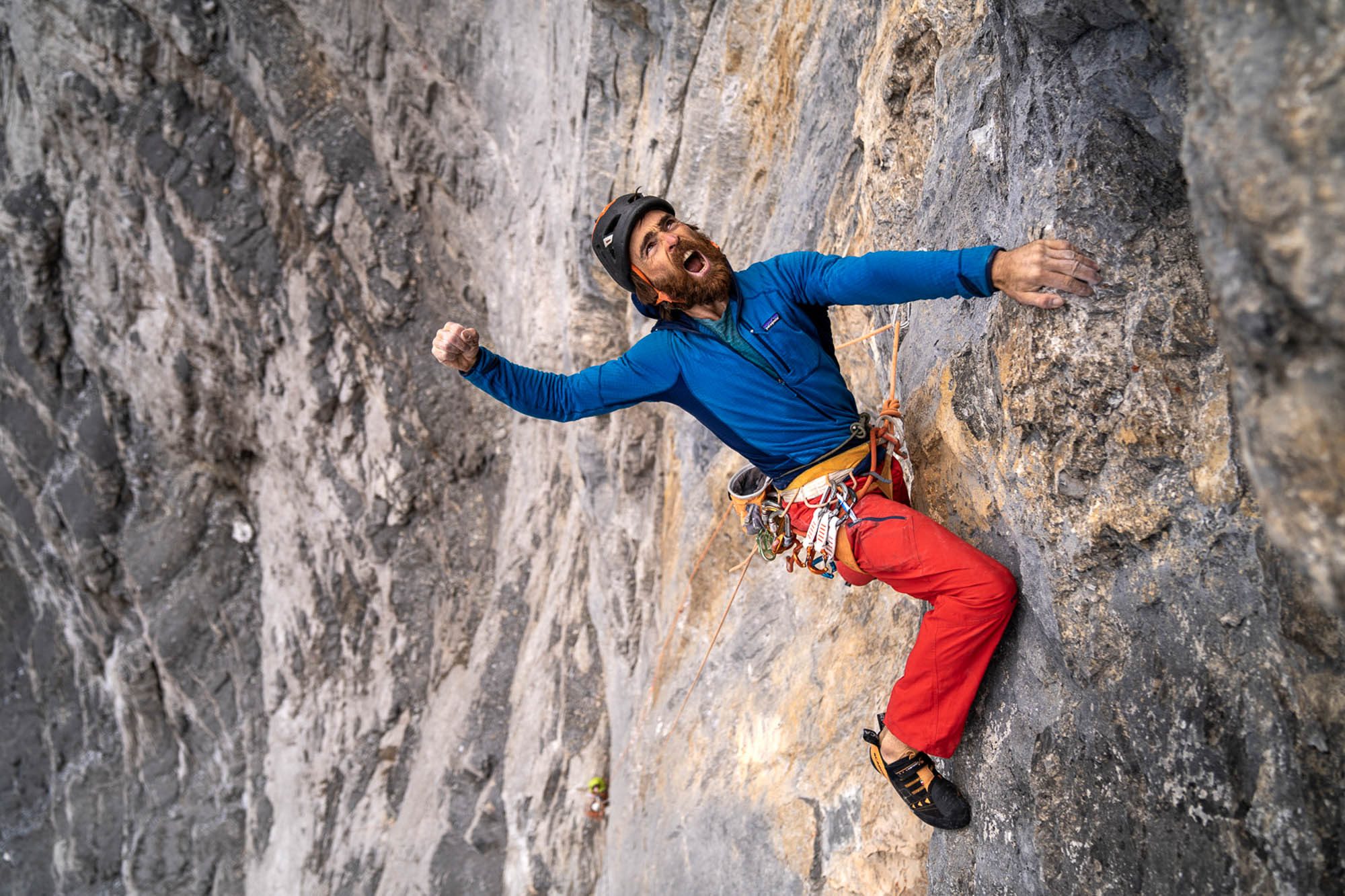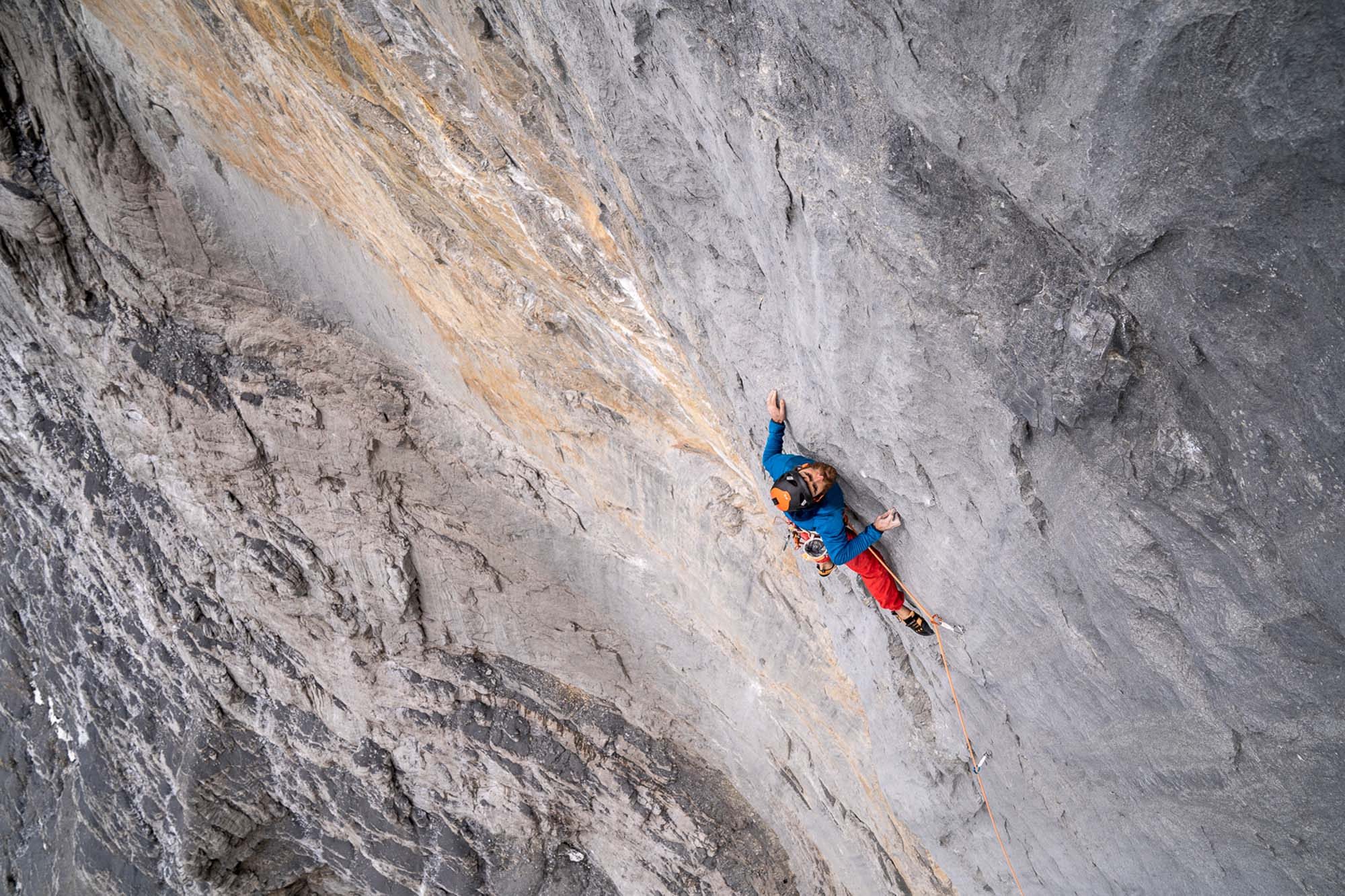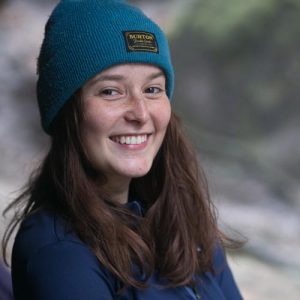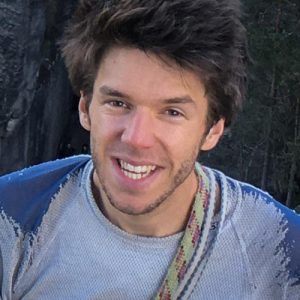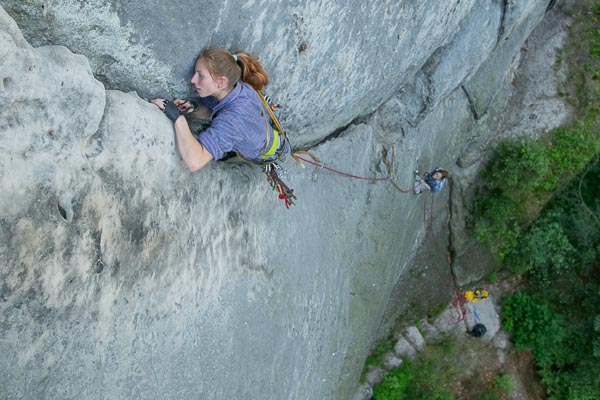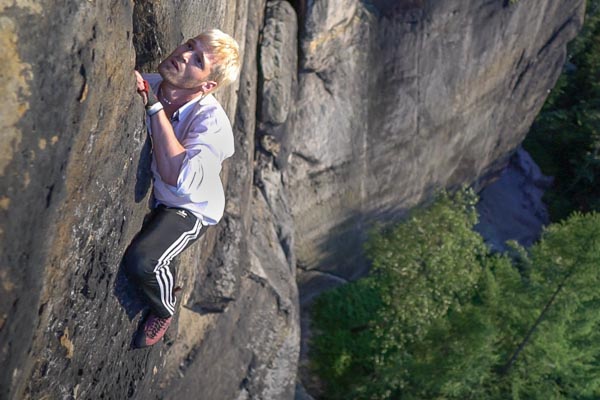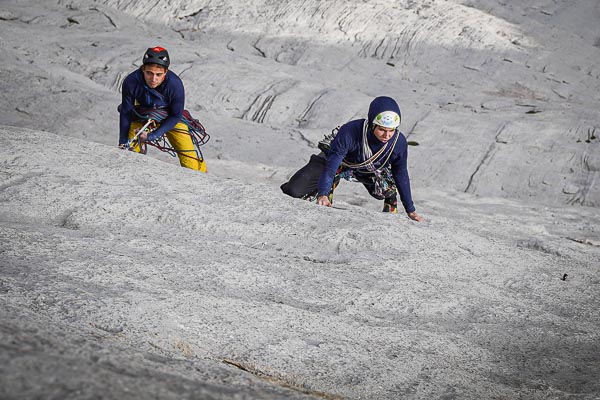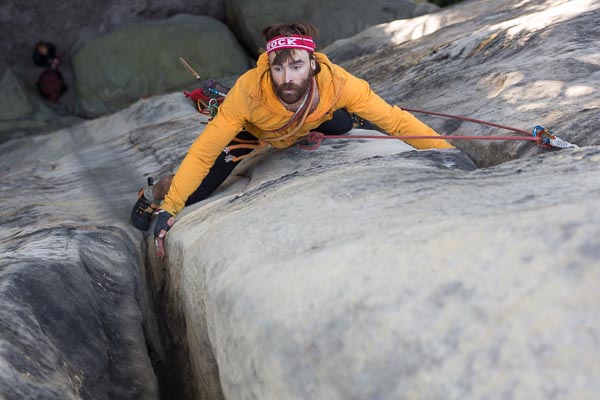Sean Villanueva
“Hi Tereza, I will be a little bit late, can I meet you at 17.40? Sean.” A forty-minute delay? Not a problem in Adršpach. This is a space, where rules of the outer world do not apply. An hour later we found ourselves sitting in grass with our heads in clouds.
WHAT IS REALITY?
I met Sean in Adršpach (Czech sandstone climbing area). He was there for ten days in July 2019 after his presentation in Prague. I first tried to contact him through his manager but we ended up meeting in a typical Adršpach way. I saw Sean outside Kalírna, a local pub I was working at back then, so I asked him for an interview right there. Sean agreed.
“It’s just the beginning of summer and I already don’t want to get back from this fairy tale to reality,” I said to him.
“Maybe the reality is here?” answered Sean, and our conversation could begin.
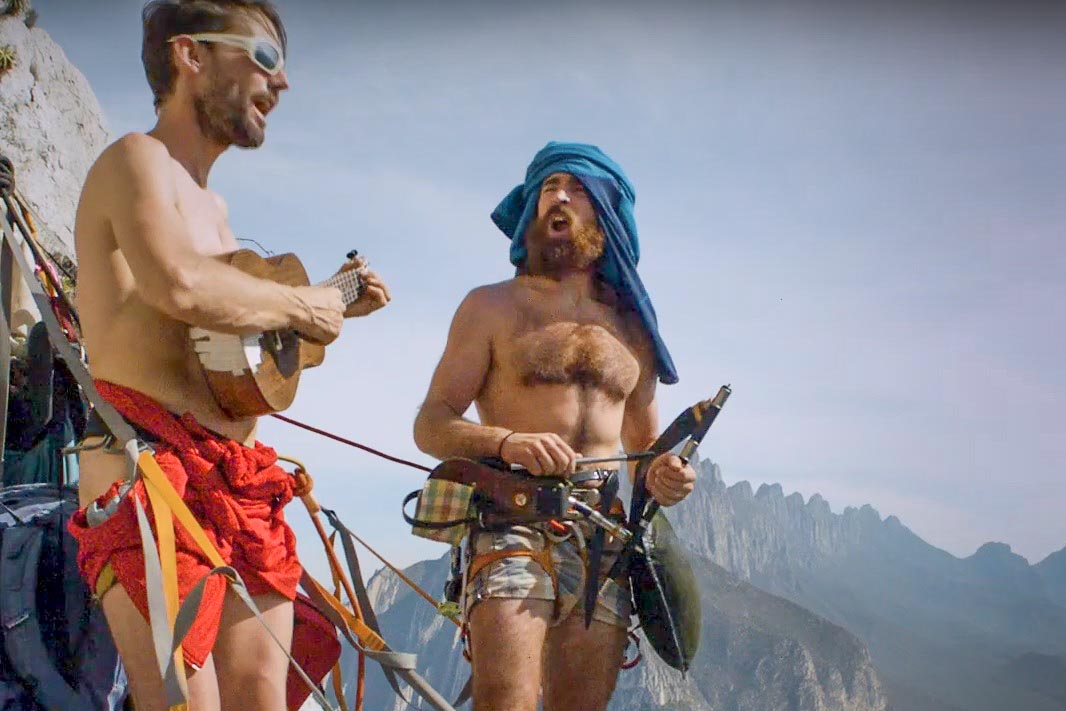
Two questions for a quick start: Do you sing when you are climbing?
No.
Can you name three beautiful places in the world?
Only three? (laughing) That’s difficult. For sure Patagonia, because I keep going up there, another one is Adršpach at the moment and then … I guess Fair Head in Ireland where my family lives. My mom is Irish – Sean is an Irish name – and my father came from Spain. That is more or less the reason I play the Irish flute. Nico has been playing the guitar since six years old. I would sing and then I picked up the whistle. I started to play the instrument when I began to travel and do big walls with Nico. Playing music is the best way to relax.
Speaking of music, you and Nico Favresse had a concert in Prague in June, is that right?
That is right. We had a presentation in Prague and played music there, too. It was very good. We had a store there, showed some pictures and talked about our expedition. We also showed our film “The Coconut Connection”.
How does it feel to perform on a stage as a musician?
It’s kind of funny. I’ve never planned to be a musician, it just happened. We are really lucky and I feel privileged.
I heard your song Done in R1.
We played it a couple of times. It was the 20th birthday of this Patagonia jumper called R1, so they asked me to write a song about it. First I was like “aaarghh” but Nico said “It will be fun! Making the music video will be a lot of fun!” so I agreed to it and we wrote a song that we thought they would never accept, but they said “OK, let’s do it,” so we went to Mexico to do some climbing for the video there which was a lot of fun. It’s completely crazy, completely off.
FROM PLASTIC TO TREES
Let’s go back to climbing now. What does climbing mean to you?
Well…I guess climbing definitely became my way of life. Traveling, adventure, meeting people, being a part of a community. And it is a sport, an art, a way to express myself.
When did you find out that climbing is the right sport for you?
It did not happen like that, it happened progressively. But the very first time I was climbing was with my brother’s friend. And the initiation into rock climbing was in Belgium with teachers and coaches. We went out climbing and I had a really good time. I liked it because I could express the fighting spirit. You have to try hard and fight hard to reach the top. That was good. But then I have moved to Brussels and you can’t find any rocks there. I was about thirteen and I loved climbing because I was in nature, that was the most important thing for me. So we were climbing a lot in the trees and in the woods around Brussels. We bought cheap ropes and other things for climbing and sometimes these would break.
Then two of my friends started to climb indoors and they always said “Come on! You should climb indoors with us!” And I as like, “No, I want to climb outside in the woods, I don’t want to go.” After a year it was like this every week so I finally agreed to go with them. I went to the climbing gym and enjoyed the physical effort of it and that’s how I started to climb indoors. From there I started to climb outdoors soon once I learned how to do it. It happened gradually. I have never thought I would become a professional climber. First I thought I had to work hard to climb as much as possible but I soon found out that climbing had become my passion. I didn’t wan to work any other job anymore so I started to create videos, do presentation, write articles and paint pictures. Everything is centered around climbing.
Do you have any specific memory that can get you in a good mood?I can’t think of a specific one but I have special memories from the hardest big walls we have climbed. And from expeditions, too. Yeah, all of them make me happy. There’s a lot of big walls where we have to try hard and other magical things that happened that help me get into a positive mindset. I don’t know, there’s so many. I can give you an example. The Madagascar project.
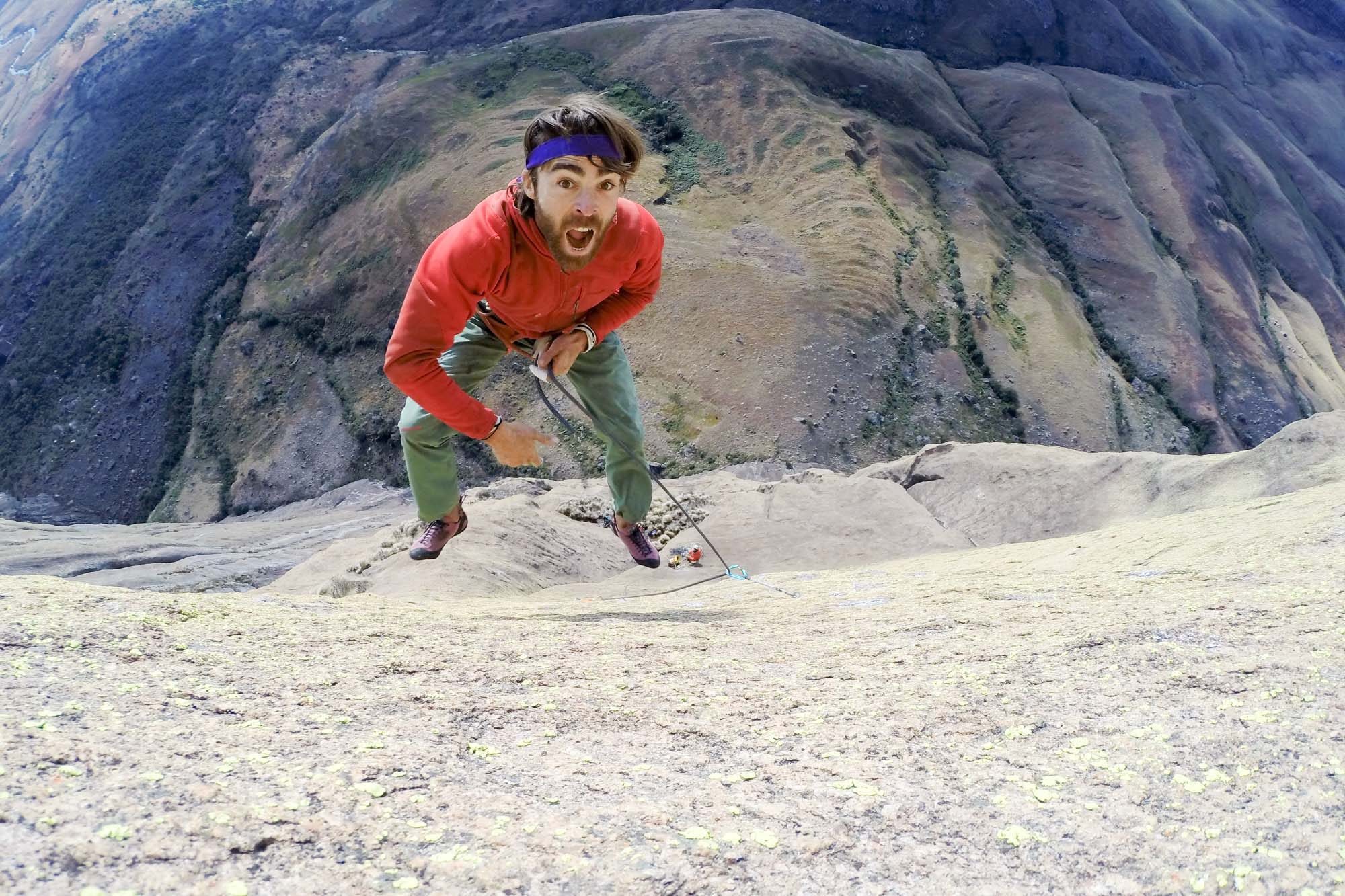
How did it go?
We put up this route in Madagascar, we bolted it first but it felt completely impossible to get to the top. We thought we would have to leave it to future generations but we tried as hard as we could. And it somehow clicked us together a we were both able to climb the whole route red point. And it was an absolutely magical moment, our fingers were bleeding, we were tired, it really seemed impossible. We couldn’t do the important moves. And I always say that something magical happened – we got a really good mindset and were just having fun. We focused on every pitch and we sent it!
“Care about your mindset and have fun. Then these magic moments can happen to you.”
DEEP IN THE CHEST
Your main domain is big wall climbing. Why do you prefer this type of climbing?
I think the main reason is the adventure spirit. I started climbing on walls in Belgium, then I slowly started to climb outside. With Nico mostly. First it was sport climbing with friends, we tried multi pitch climbing and then big walls – for the adventure. There’s more adventure and hardship and suffering there. For us, anyway. The challenge! To try hard while being in this wild place.
What do you need if you want to climb a big wall?
The most important is definitely a special mood, an attitude, a motivation and passion. You have to want! Your motivation has to be healthy, too. It is a feeling in your chest more than in your head. Like a fire. If you have that, the rest will follow. And if you don’t have that, you can be as fit as you want, you can be as strong as you want but it just won’t work for you. Good company is also important. Good spirit in a team. With this you can have a lot of fun. I guess this is the most important thing in big wall climbing – to enjoy it, to have fun. If you are with somebody who wants to perform, who just does the sport, that isn’t as much fun.
Music is important for me and my contentment during climbing. I usually carry my whistle, Nico carries his guitar, sometimes I carry my bagpipe. From a logical point of view it doesn’t make sense, the instruments are heavy of course. But it is really important for us. It helps us stay connected to the ground, to the earth, to the wild place around us. When he weather is bad, you have to wait and when you are waiting you’re losing your energy, your motivation and strength. In this case music is a perfect distraction. When we have our instruments we never wait, we’re too busy playing music. And then we are more ready for another turn.
Can you lose the line when you are climbing a route?
When I climb an existing route? Yes, yes of course. But a lot of time we don’t climb an existing route. It’s more adventurous. Then it’s easy to get lost because when you are on the ground you see the line in a big wall and you think “Let’s go there and there and there” But then, when you are up against the wall you can’t see how far into the route you are and you can get lost easily. But even when you climb an existing route you can get lost. You tale the wrong crack… Yes, it happens.
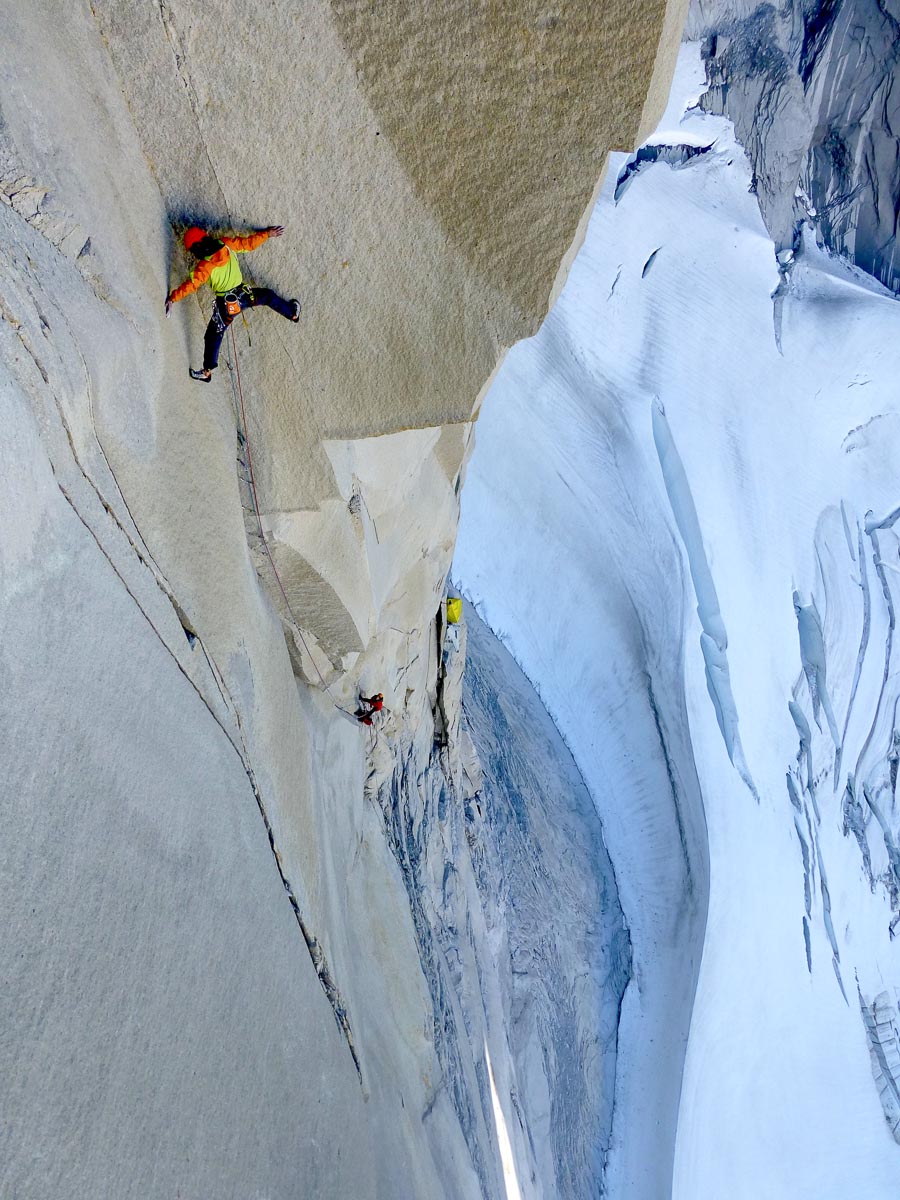
GET TO THE HEART OF ADRŠPACH
You are in Adršpach now. Can you compare climbing the sandstone towers here to big wall climbing?
The adventure aspect is definitely there. Rock quality in big walls may not be great. Sometimes it is a little dirty and mossy or sandy or gritty. Sometimes the rain comes, you don’t have much gear, you have to climb very carefully and think about right decisions. This is an important aspect for sure. You have here (in Adršpach) some sport lines with rings but the moves around the rings are really hard. Then you have some cracks there, it is without protection in wide cracks. It it very demanding and technical.
Does Adršpach feel as a sort of training place to you or is it a proper challenge?
For me it is a learning experience for sure. I like it here because I can learn a lot. There are many challenges.
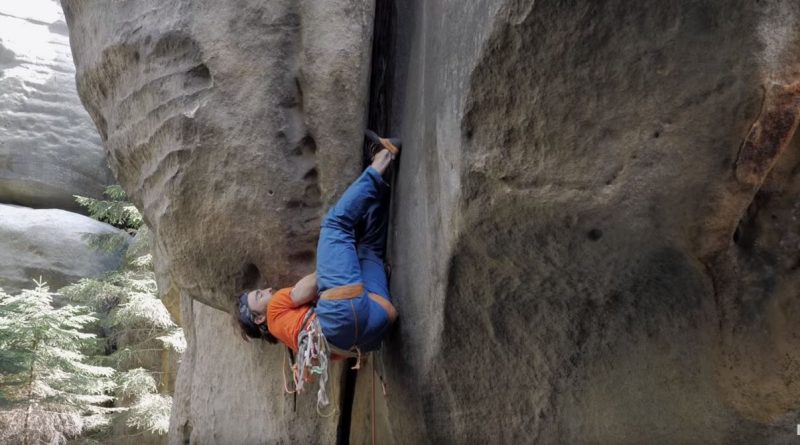
Do you have a favorite route here?
Not yet. I see lines everywhere but I didn’t climb enough yet. I climbed one route with Czech climber Matěj Svojtka. He managed to do the first red point and I went straight after him. It was in the Himalaya sector – a route named after a beer („A jde se na pivko“ Xc, 8a+ fr.). It was absolutely incredible. I can’t believe something like this exists. But I liked almost every route I climbed here, the quality of climbing here is so so good.
Do you climb with locals or do you have your own climbing partner
Yes, with locals. When I was here for the first time I just visited pubs and I was meeting people. It is a little difficult for me but now I have some contacts in Adršpach so it is really easy to find a climbing partner for another day. The community here is really cool and has a very good spirit. Really fun people with good vibes and good attitude. Just positive energy.
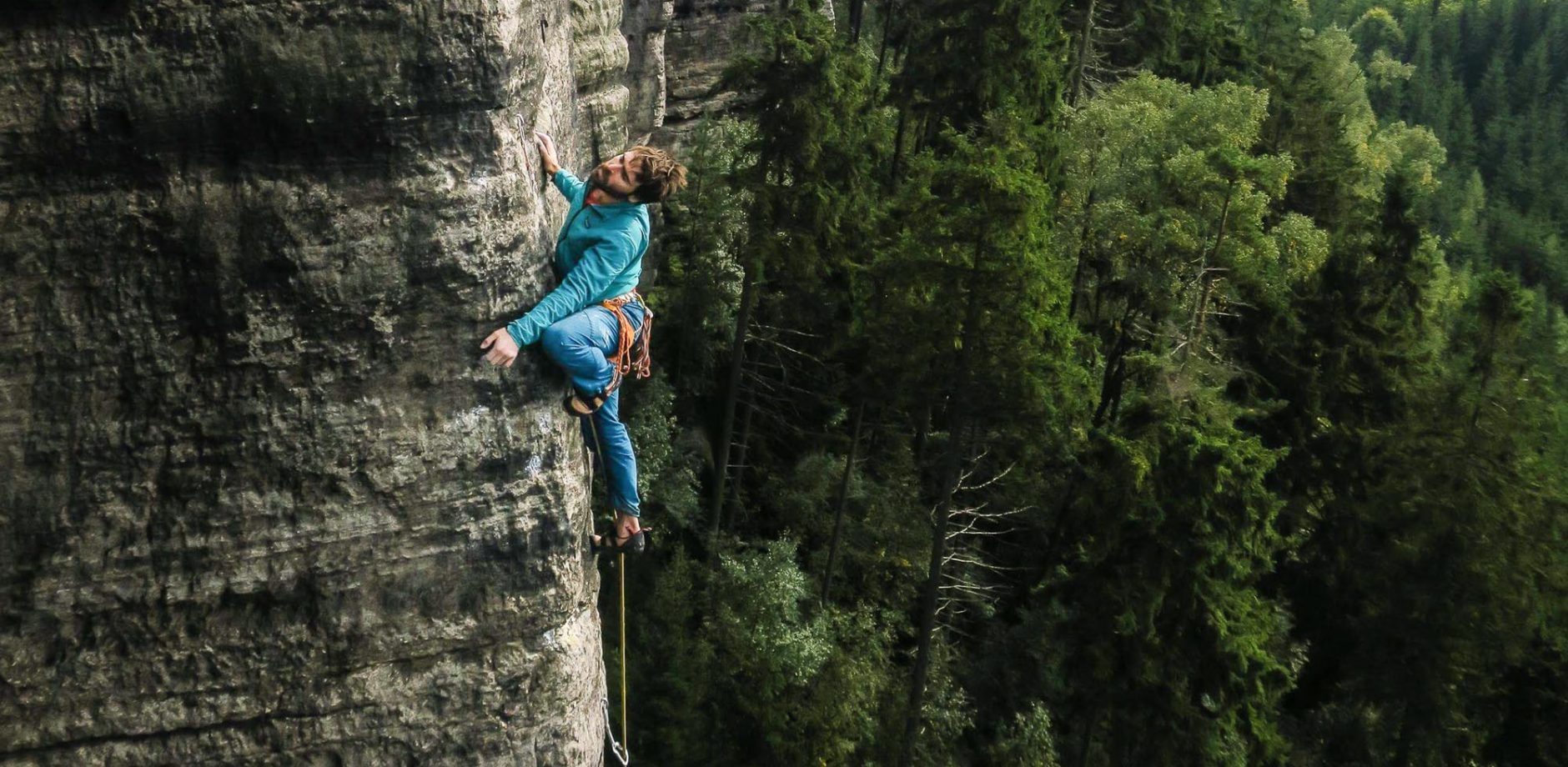
Could you describe your typical day here in Adršpach?
I wake up, do a little stretching first and then go for a run. If I am early enough I try to pass around near the lake. Obviously it is forbidden to swim there and I may have been swimming there, I don’t really know. The I run back and have a tea and then I usually meet friends, around half past nine. We do whatever they suggest, I usually leave them to choose a project. We climb amazing things every day. I spend the whole day climbing and then I go to my van, have some food and play music but I like to go to bed really early.
When I have a rest day I go for a hike or work on my computer. I went to Trutnov today to do some shopping… So that’s my days! These days full of climbing can fill up really fast. The routes are so involved. You don’t have to do many climbs to have a full day. There are so many lines here and if I wasn’t here with locals I wouldn’t get very far. Some days bring little gems, sometimes friends take me to the forest with them to show me hidden places. The rock town is a real labyrinth even with a guide book. I can’t imagine finding a route with just a guide book.
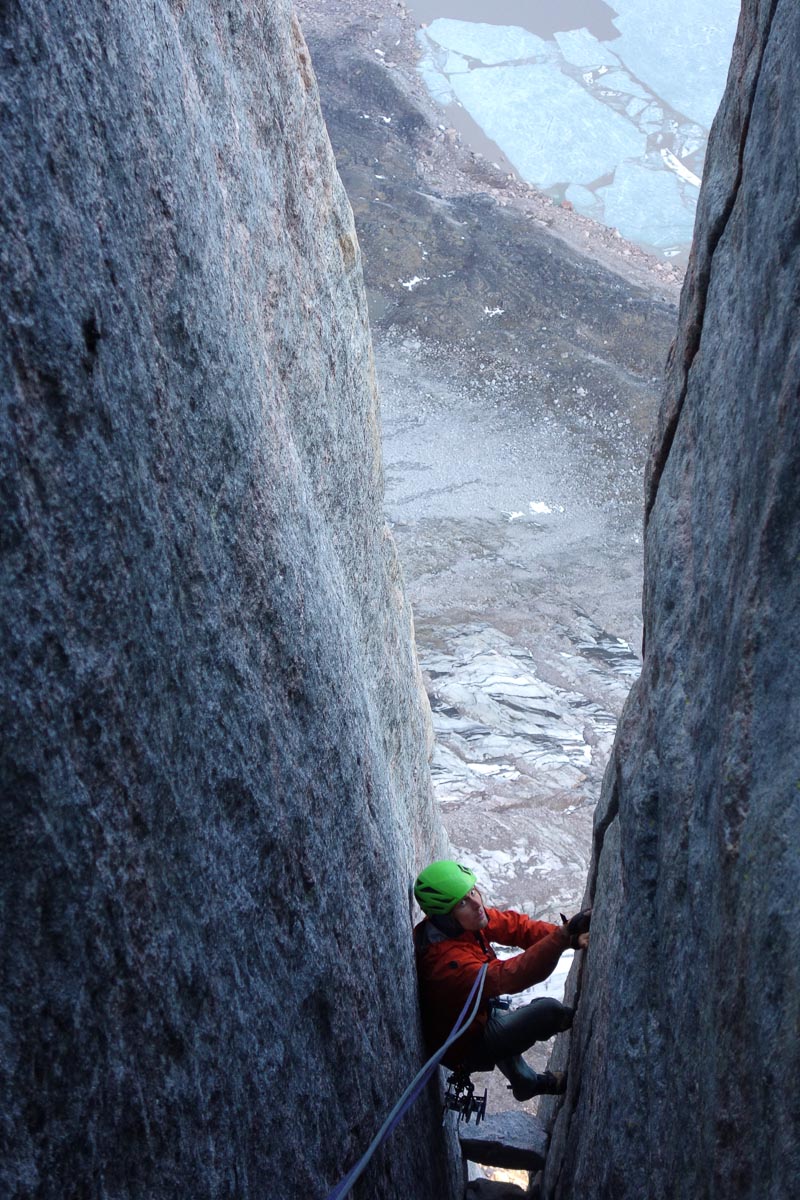
MY VAN MY HOME
Can I ask you a personal question?
Sure.
Do you plan to retire as a climber and start a family?
No plans, no future. I am pretty open, I don’t have many plans, I’ll just see what happens. What happens, happens.
You travel a lot, do you miss a stable place in your life?
I don’t know… I have an address in Belgium but I only spend a few days there and then I leave again. I’ve never really lived there. But now I’m traveling and I have my van, all my stuff is in there. My van is whatever I am, this is my home. And Ireland. When I go back to Ireland to visit my family I also feel at home. I don’t feel like I lost any roots, I feel fine.
It was very tiring for me to travel so much. We travel to presentations and climbing festivals and we do that a lot, which is very exhausting. I like to spend at least a few weeks or months in the mountains so if I travel too much but I am able to spend a few months in one spot, I feel at home there. I can take care of myself, get to know the place, the people, develop a little routine there. But when I travel a lot all the time it’s just too much for me.
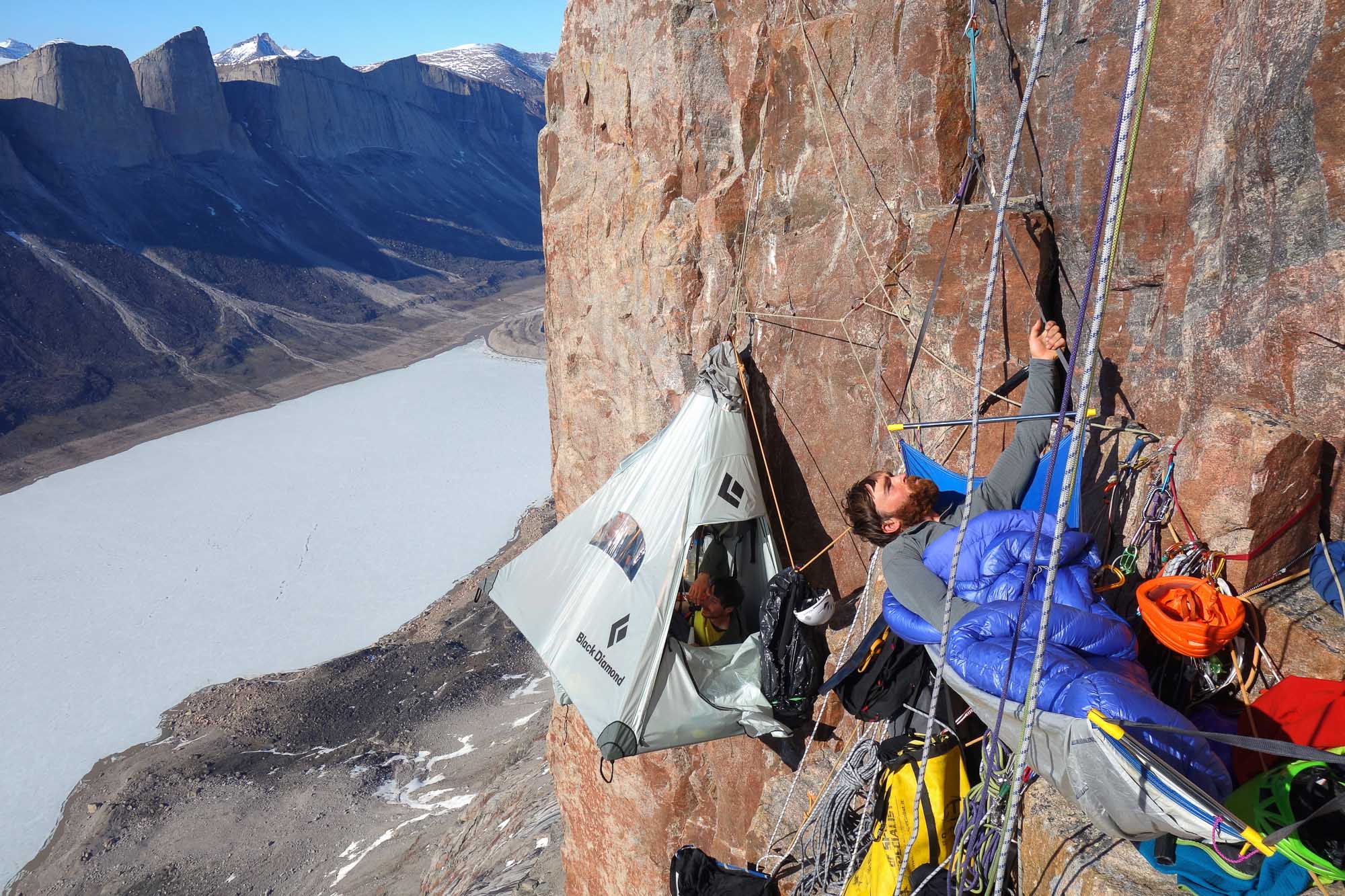
You were talking about fatigue caused by traveling. What do you do to relax?
I do slacklining, yoga, meditation…
What are your plans in the nearest future?
I’m going to India to climb in the Himalayas in September, so I should go to the Alps soon to train for it. Nico, my fixed partner, is injured so he is out for this moment. I’ll climb with two guys I’ve never climbed with before. A Swiss guy and a French guy. I don’t know them very well, so we are supposed to go to the Alps first. I should be a really different expedition but it will be a good experience.
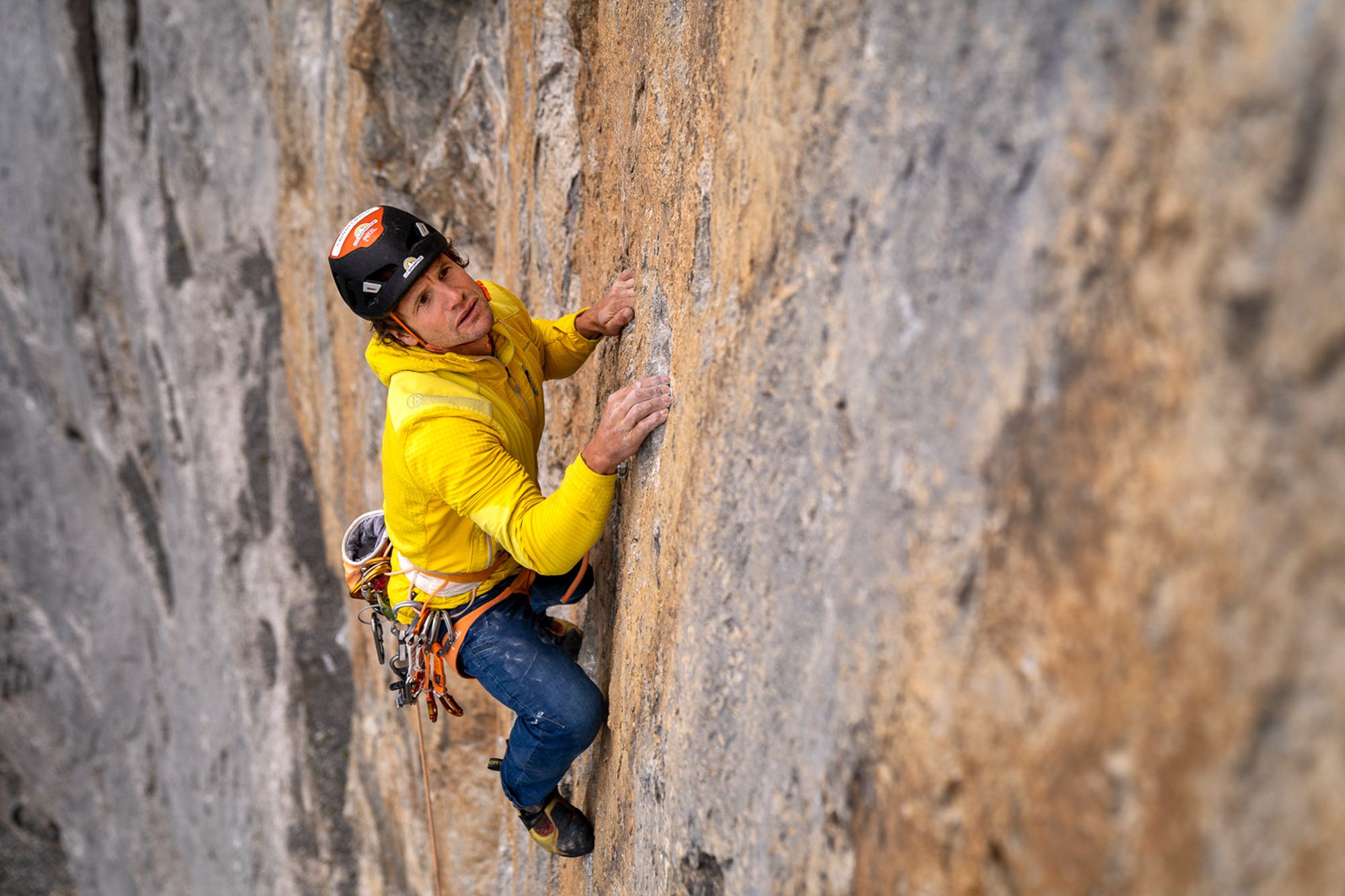
_________________
After we parted, Sean headed straight to the north face of Eiger, where he eventually joined Nina Caprez and Roger Schaeli. How this trip turned out? And what it’s like to climb with Sean? That are some of the questions Standa asked Roger in the following interview.
THE GREAT WARRIOR
Roger, how did you meet Sean?
We’ve known each other for a long time. Several years ago, we climbed Fitz Roy together. This year, Sean joined me when I was looking for a climbing partner for an expedition to Meru. At first, I asked Nico (Favresse) – but he was injured, and so he suggested Sean. My goal was not to make a sporty RP ascent of the wall but rather to enjoy the adventure in the mountains to its fullest. The big wall. Of course, Sean instantly loved that idea – we spend a long time talking about it on a phone.
During your Eiger trip in late July, you have climbed a route “La Vida es Silbar” (7c+, 900 m), and then teamed up with Nina Caprez to make a first ascent of a new route “Merci la Vie” (8a/b, 350 m) in a single day. (The name of the latter translates as “Thanks to life”– it is dedicated to climbers who died.) How was the trip for you?
First, we went to Chamonix to bid our last farewells to David Lama. Then the weather got much more stable and Sean wanted to try “La Vida”. It’s a beautiful route and we managed to climb it in a single day.
Was he ready to climb boldly after he strained his nerves in Adršpach?
He arrived in a great shape! Both mentally and physically. In “La Vida”, he managed to send all the hard pitches on flash! I knew the route so I could give some advice to him… he almost fell but then he managed to hook the heel in the key move. It’s really hard to climb this one without chalk marks! It’s definitely not a “OS friendly” route.
What do you like most about climbing With Sean?
What’s so special about it? What really stands out about Sean is his motivation and enthusiasm. The way he approaches climbing. He just dives into it headlong! At the same time, though, he seems relaxed and you never see him stressed or nervous… he’s simply a great warrior. He excels at climbing traditional stuff… on Eiger, the trad protection sometimes doesn’t work at all – it’s hard to tell if a friend would hold in that sort of limestone… Sean was somewhat careful in the route, but he was definitely not afraid of long runouts… I haven’t met many people who could climb such a difficult route using trad gear.
Did Sean take any musical instruments on his trip to Eiger?
Yeah, he took a flute with him. I carried it in my jacket during climbing, when we were finishing the last pitch of new route. Unfortunately, I unzipped the jacket at the neck a bit and the flute whizzed somewhere into the depths. “You could have said that I shouldn’t have taken it with me straight away. You didn’t have to throw it down!” laughed Sean.
Does he have any favorite lines or jokes?
(laughs) We had a lot of fun there. Especially with Nina Caprez. She told us all sorts of love stories. (laughs a lot) I remembered one particular scene. During climbing, I lost a wall hammer so at the next anchor we have chatted about things we had lost during climbing. Sean asked: “What was the most precious thing you ever lost in the wall?” Nina replied straight away: “My virginity.” (laughs)
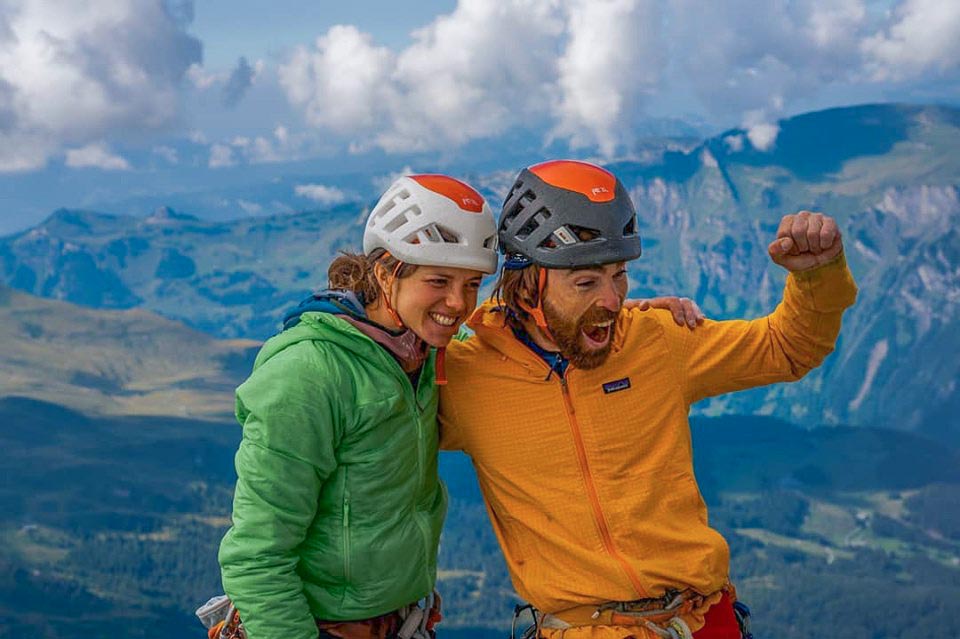
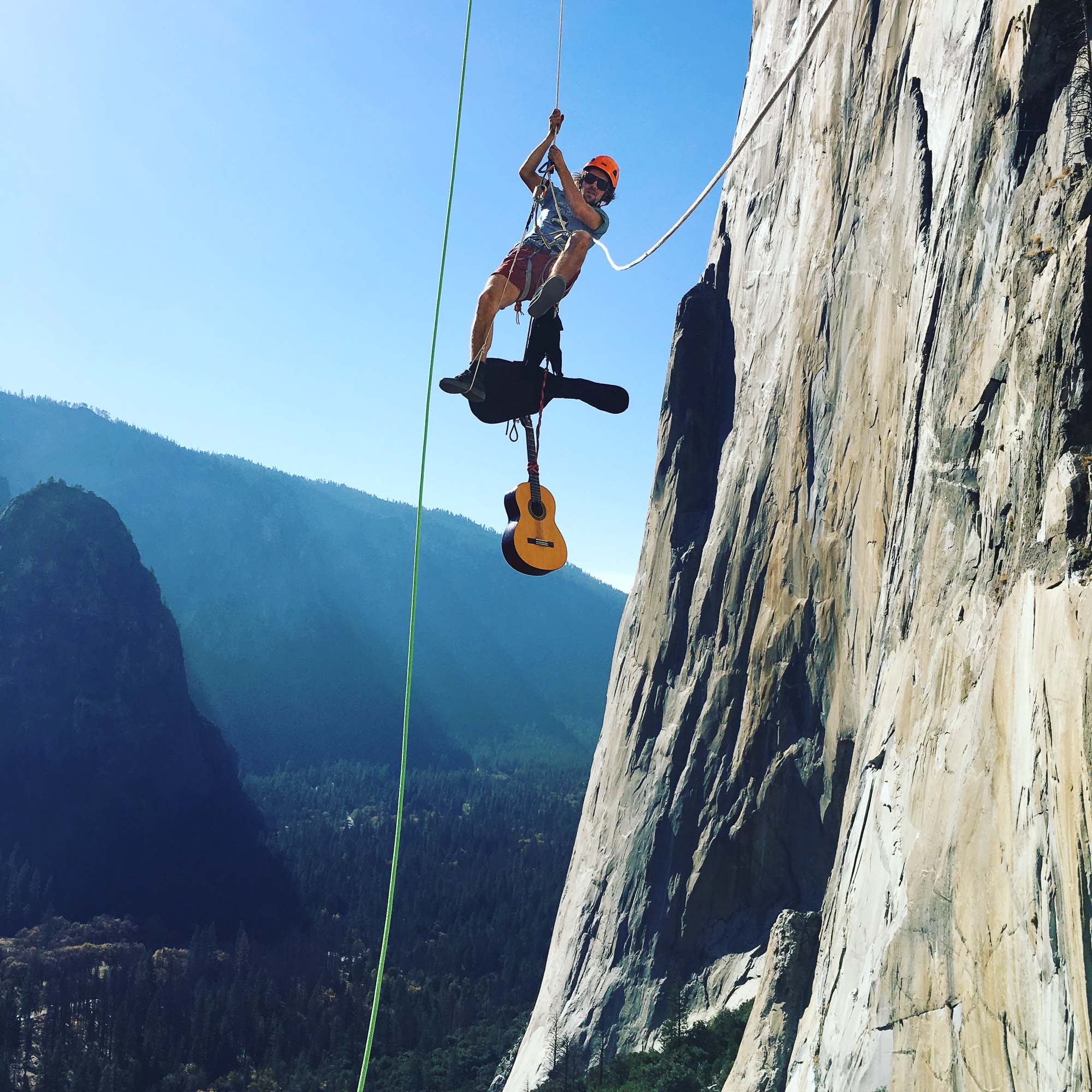
Born on February 7, 1981 in Belgium. His father comes from Spain and his mother is Irish – that’s where his love for Irish flute and music in general comes from.
He sees himself as a big-wall climber: “Free climbing in big walls can teach you everything about life. The great walls can show you how to live in a present moment.”
His big-wall achievements? Sean favorite memory is from 2010, when he and his sailed along the shores of Greenland for three months. The gang of climbers lived in a 10-meter sailboat, on which they traveled from wall to wall looking for virgin lines.
He also values the first ascent of the eastern face of Fitz Roy in Patagonia. Together with Nico Favresse, they climbed all the pitches OS and spent 30 hours in the wall climbing without a break. (1350 meters of cracks up to to 7b) Besides Patagonia and Greenland, he also climbed big walls in Yosemite, Pakistan, and Madagascar.
Despite his interests in big walls, he has also climbed some great single-pitch routes – for example his bold first ascent “Snell’s Law” 6c / 7c+ (fr.) on Mirror Wall in Ireland, or an overhanging off-width “Turkey Crack” 8a in Cadarese, Italy.
There are also several outstanding climbing films starring Sean. These include Pakistan Project (2007), Asgard Jamming (2009), Vertical Sailing Greenland (2011) and the newest one Coconut Connection (2017).
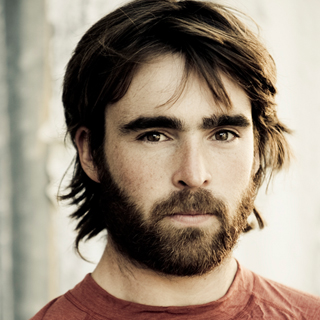
.
__________

Sandstones, Mountains? Do not miss our new original article | Follow eMontana on facebook

